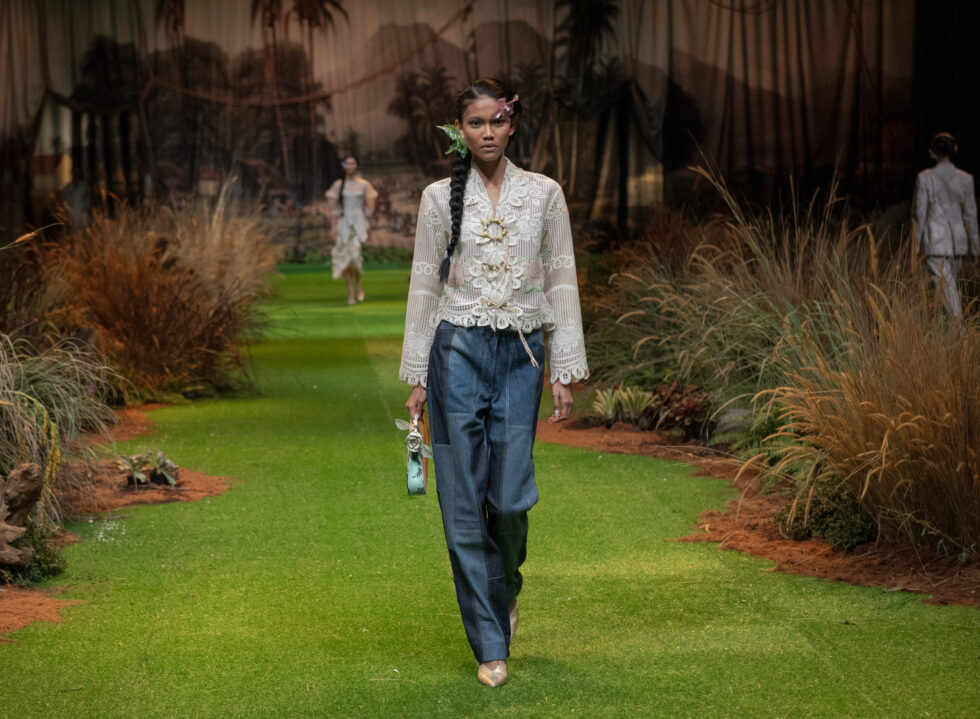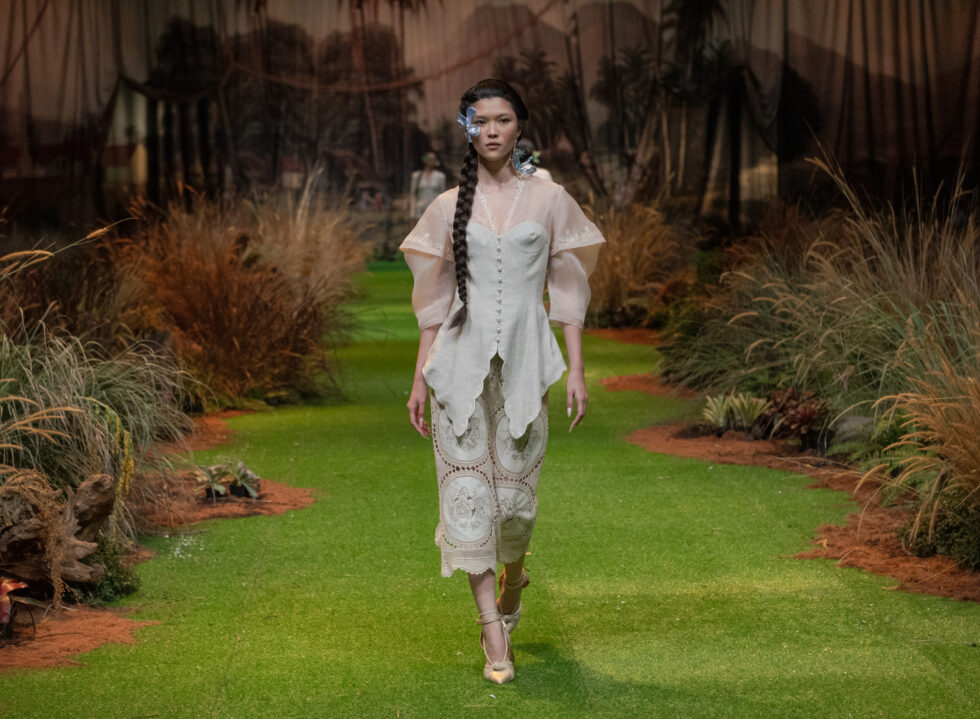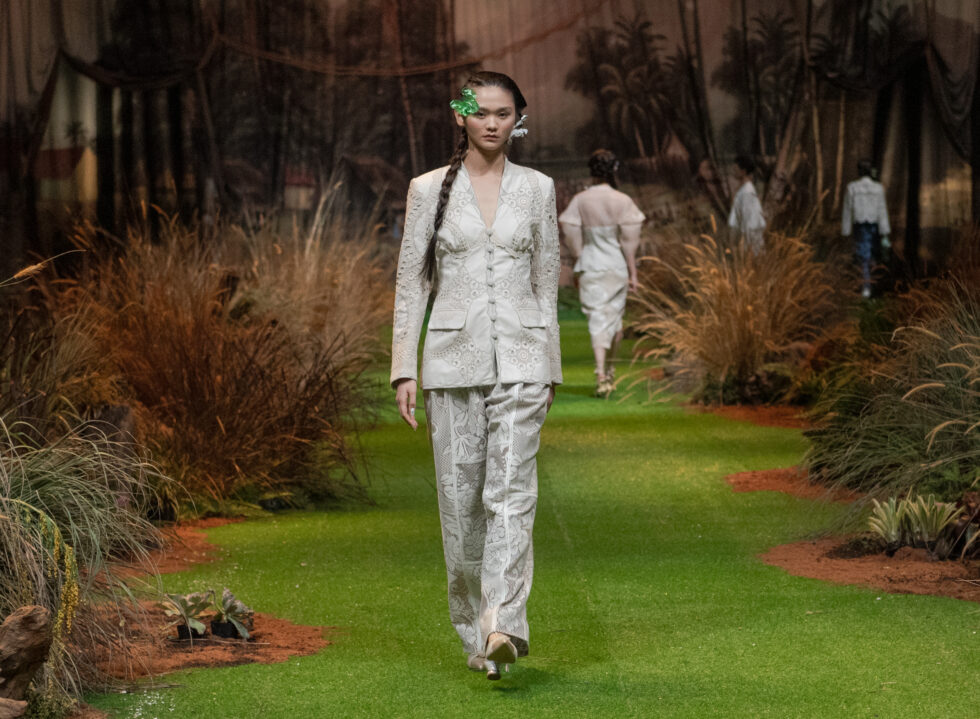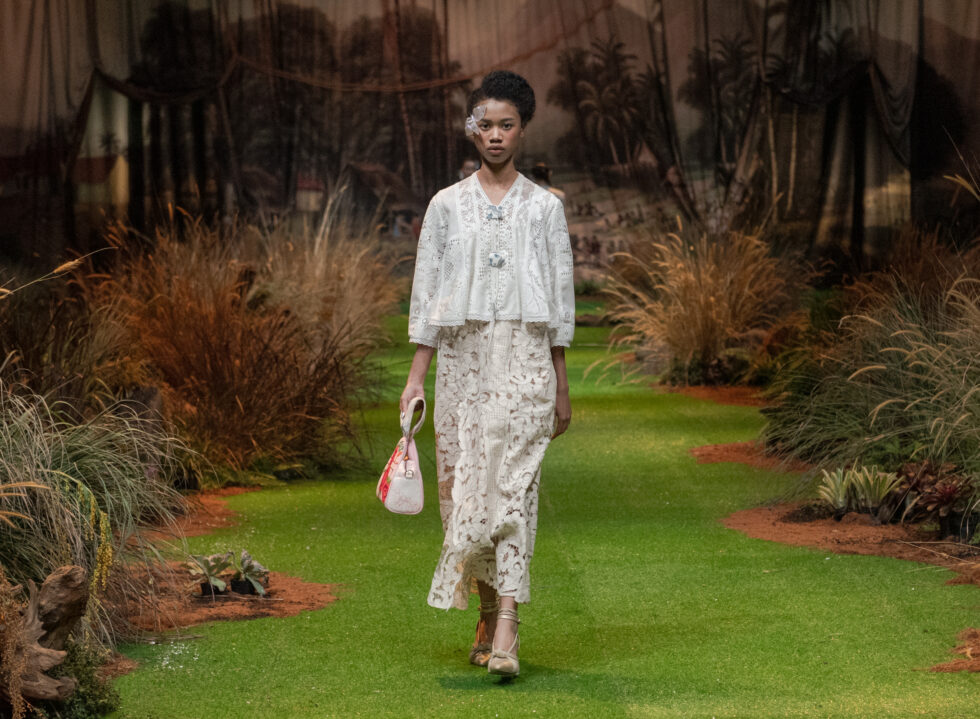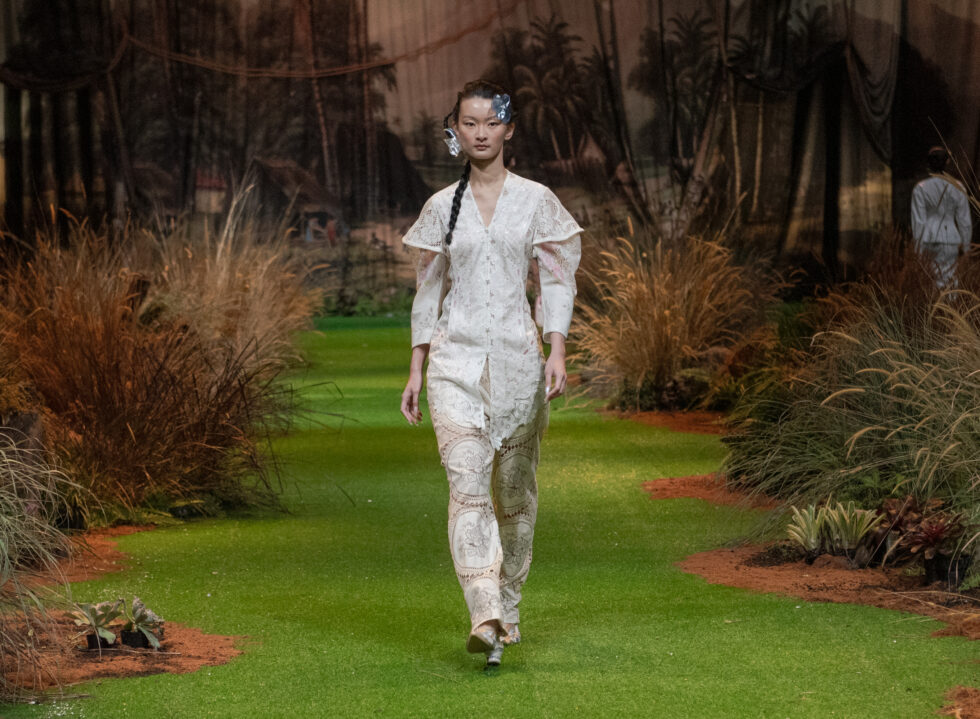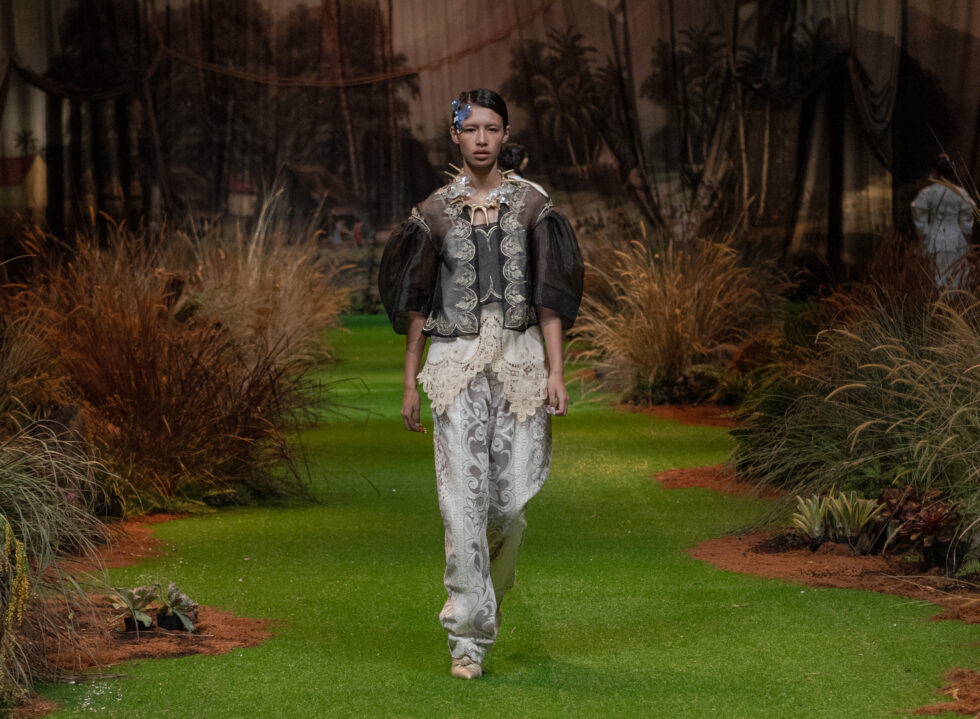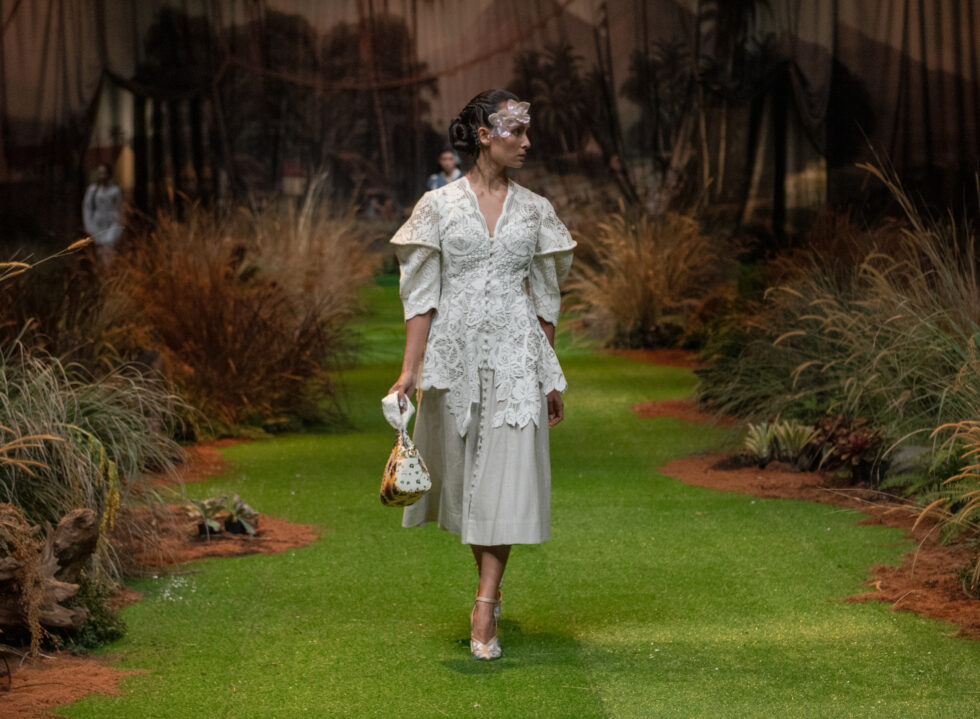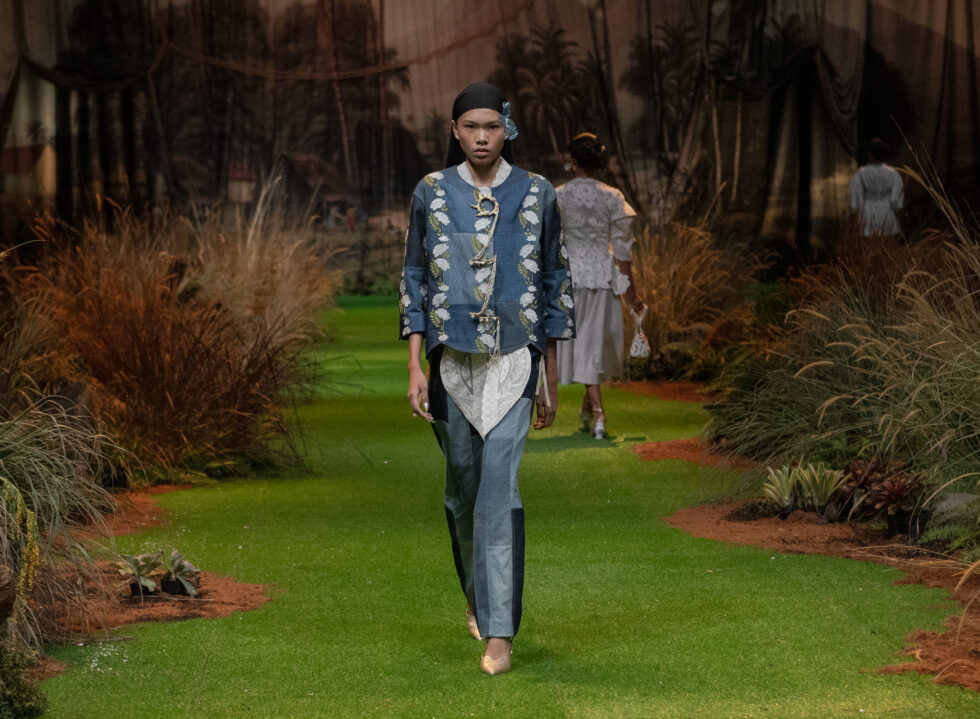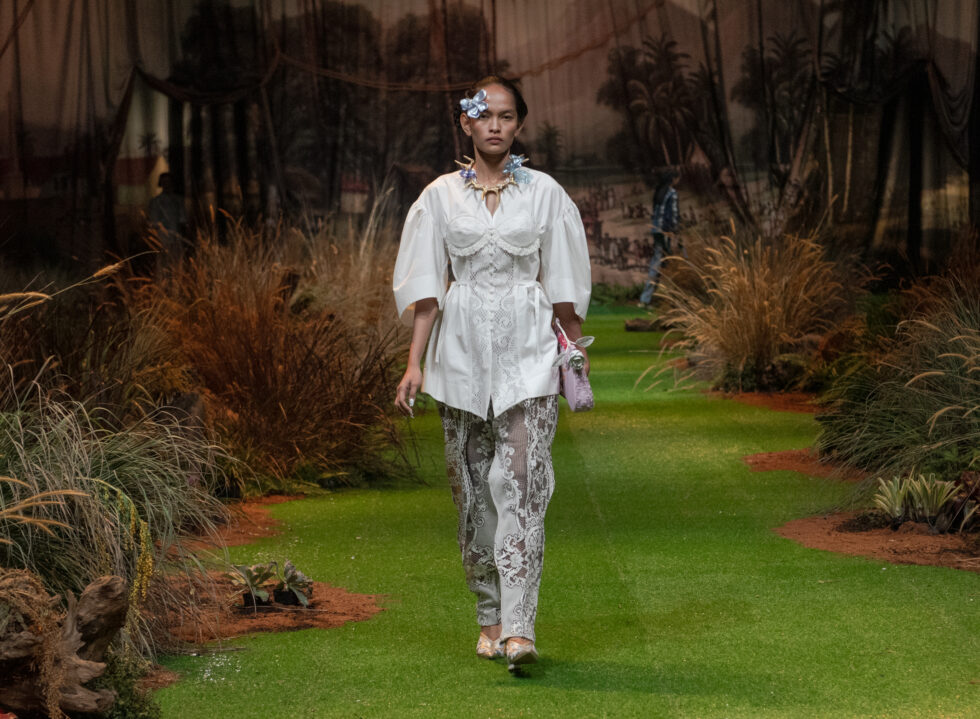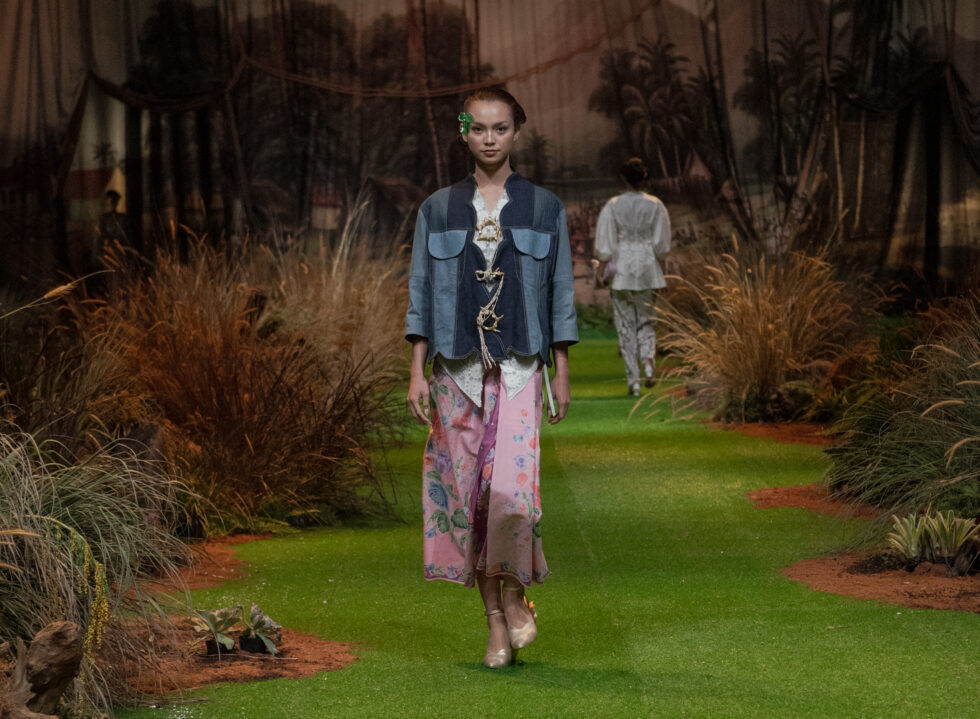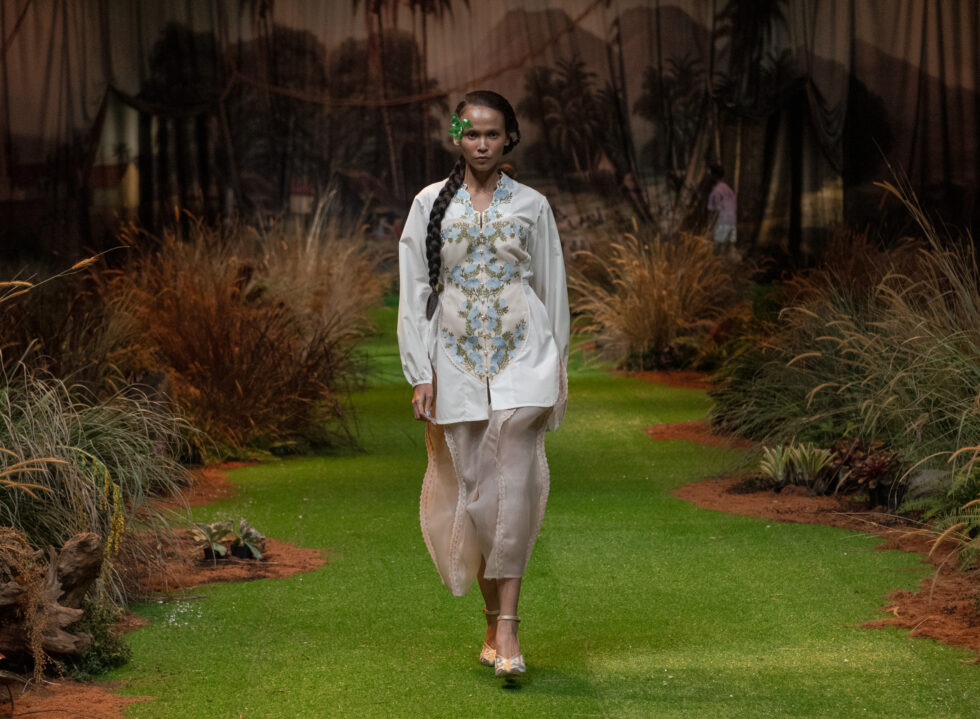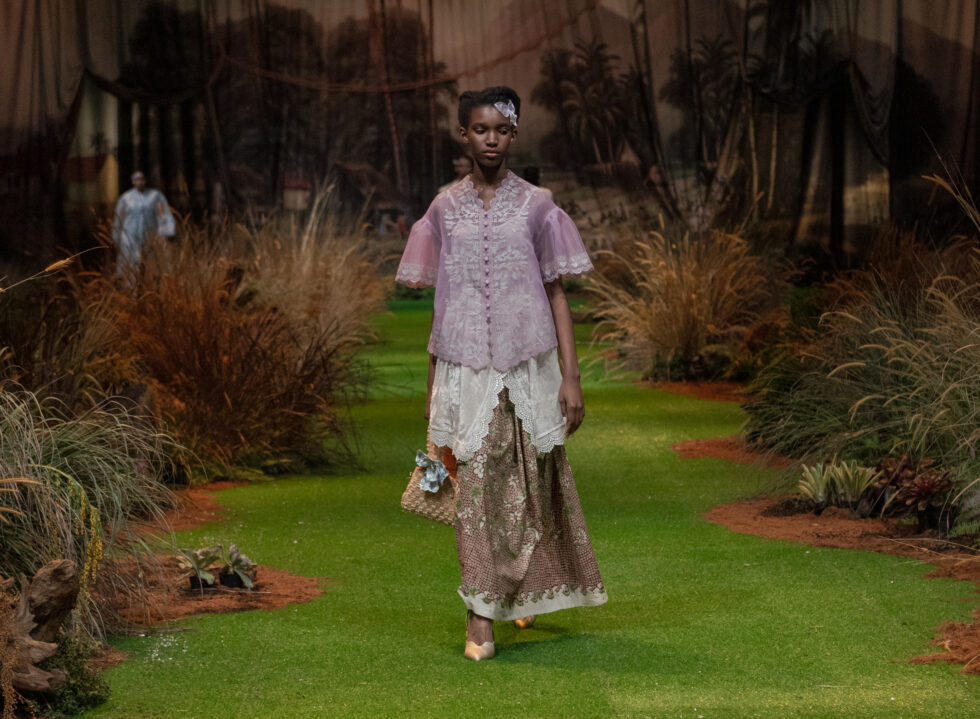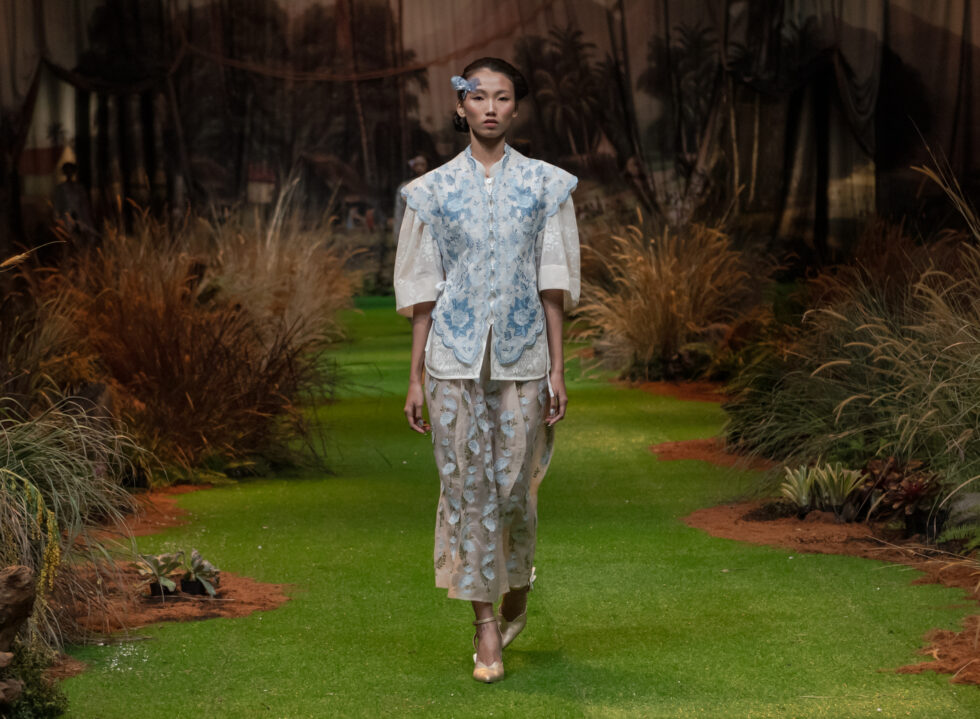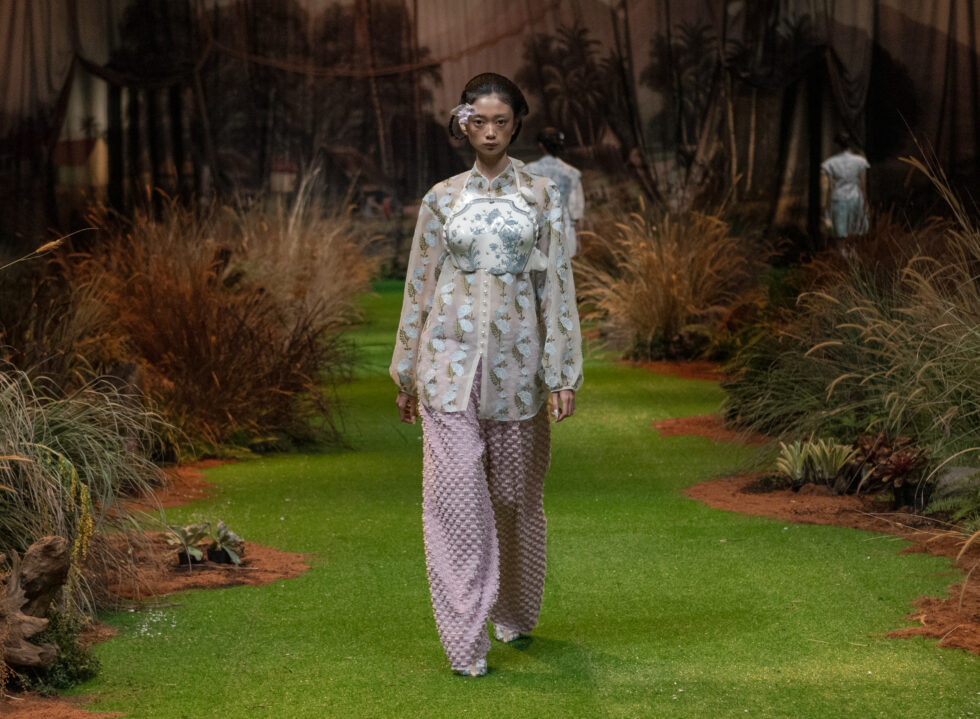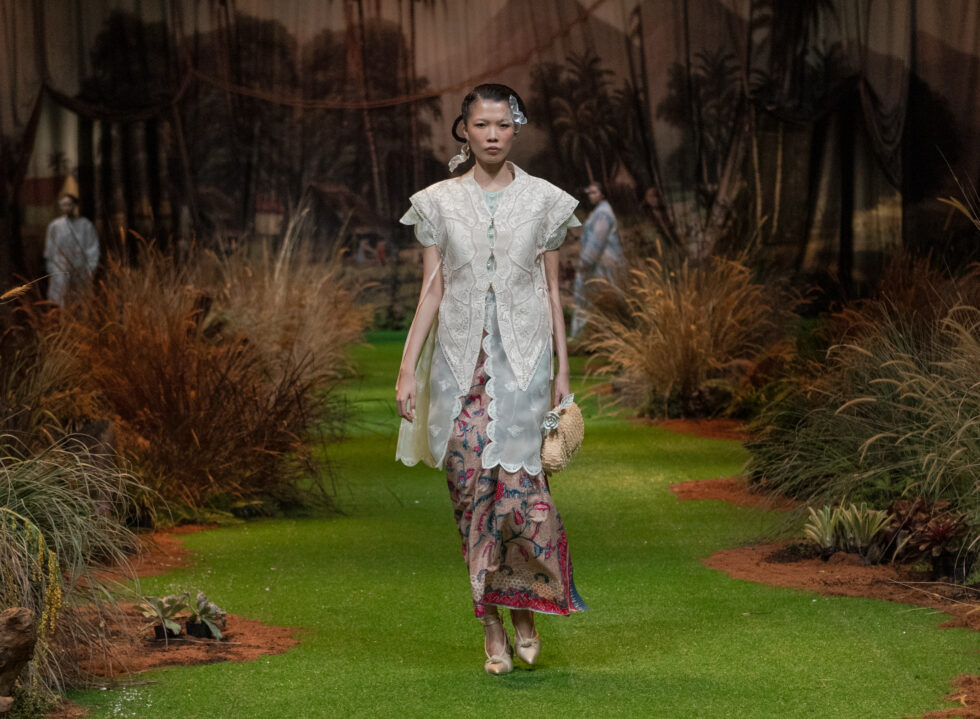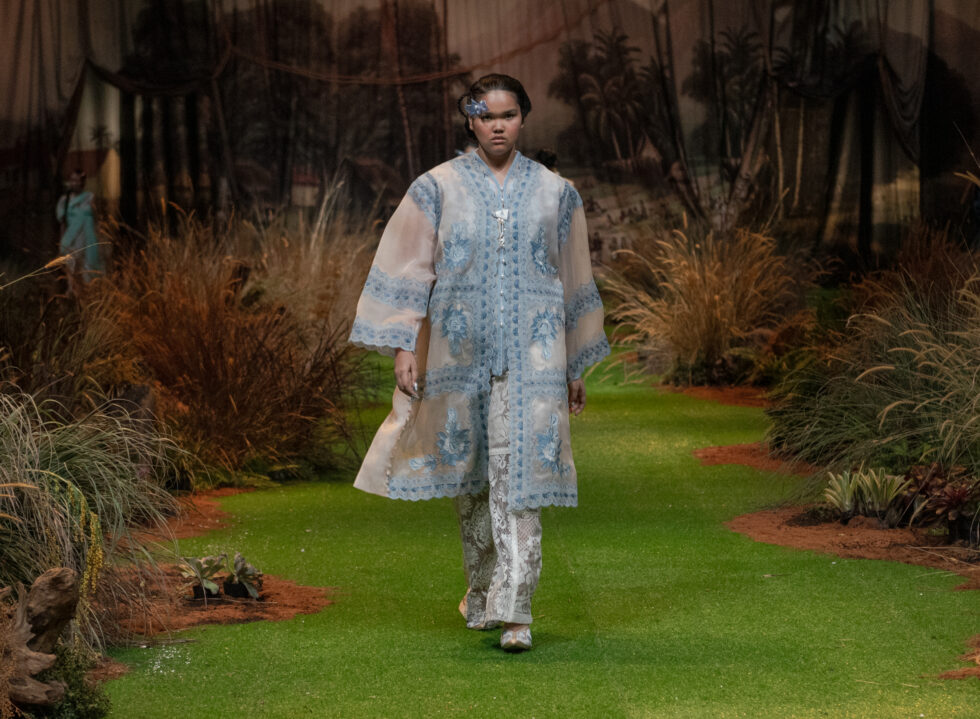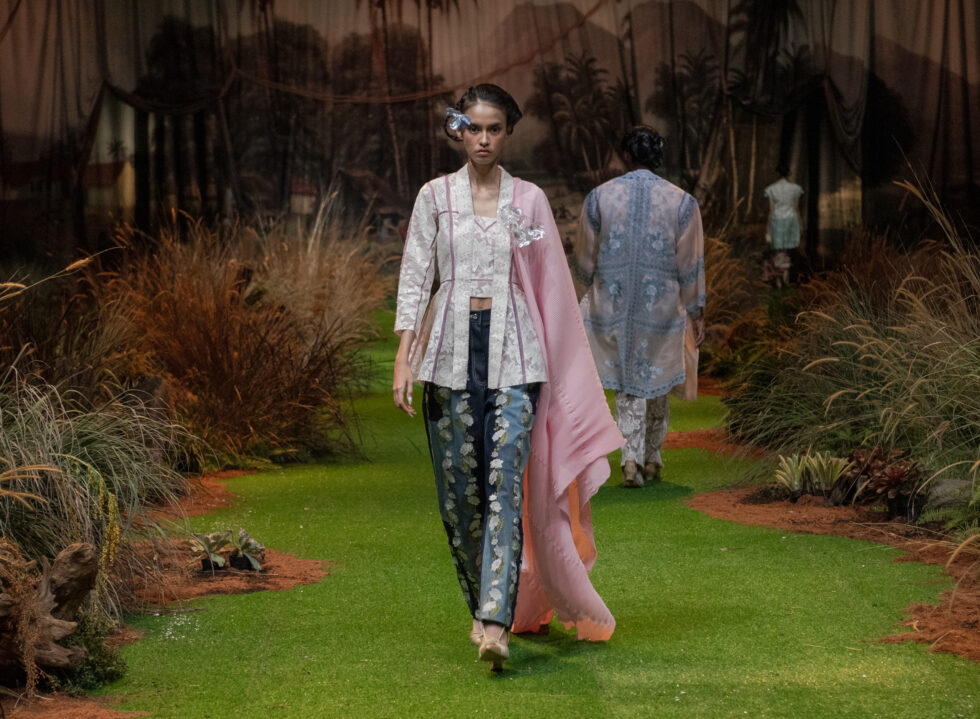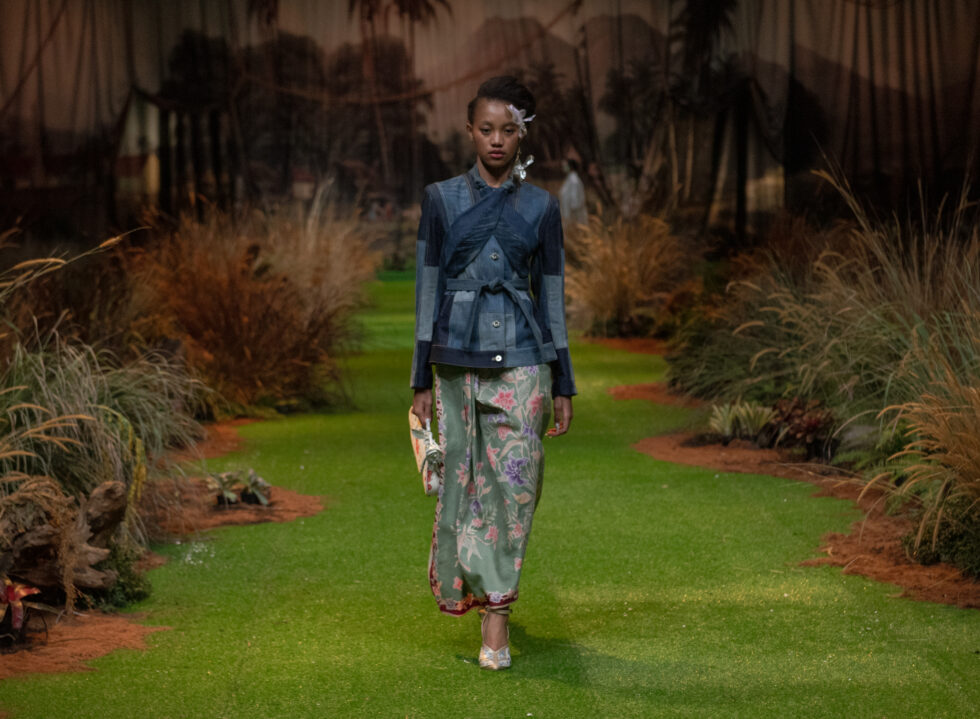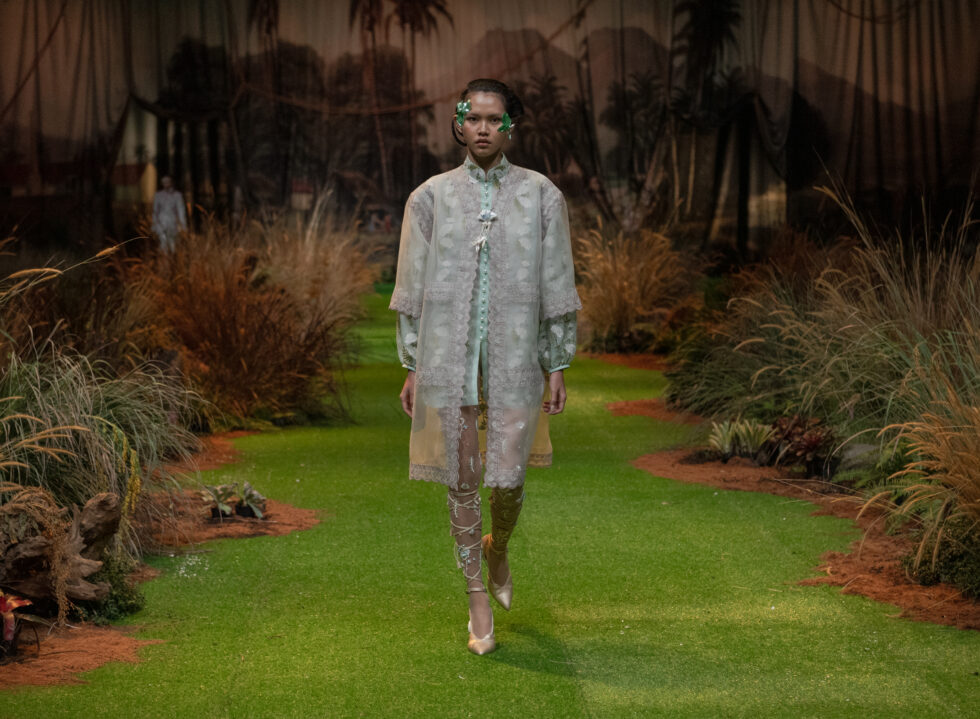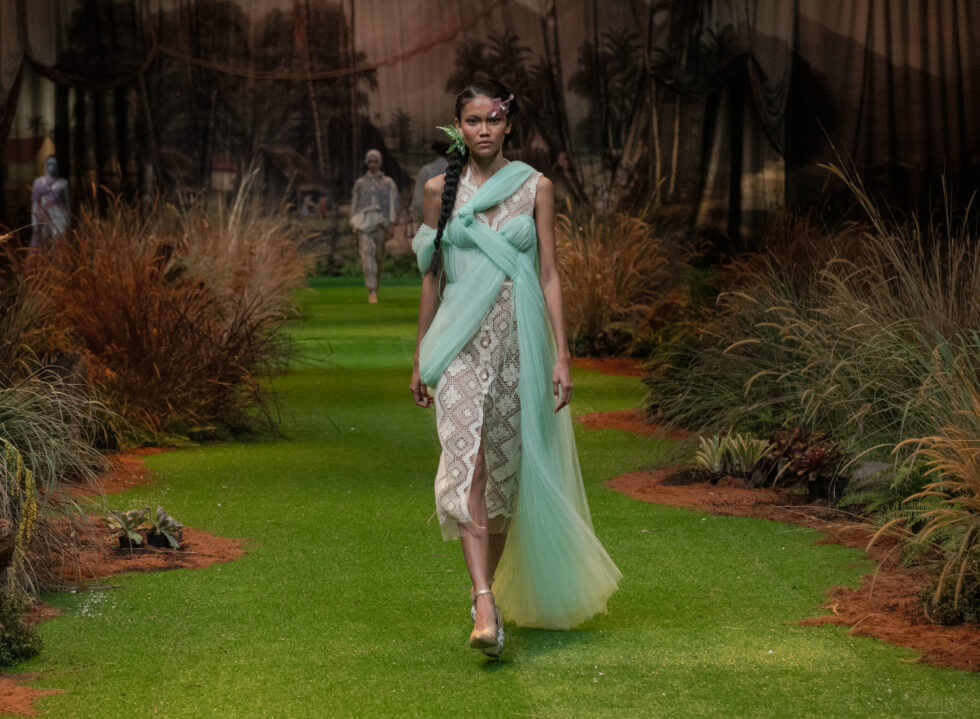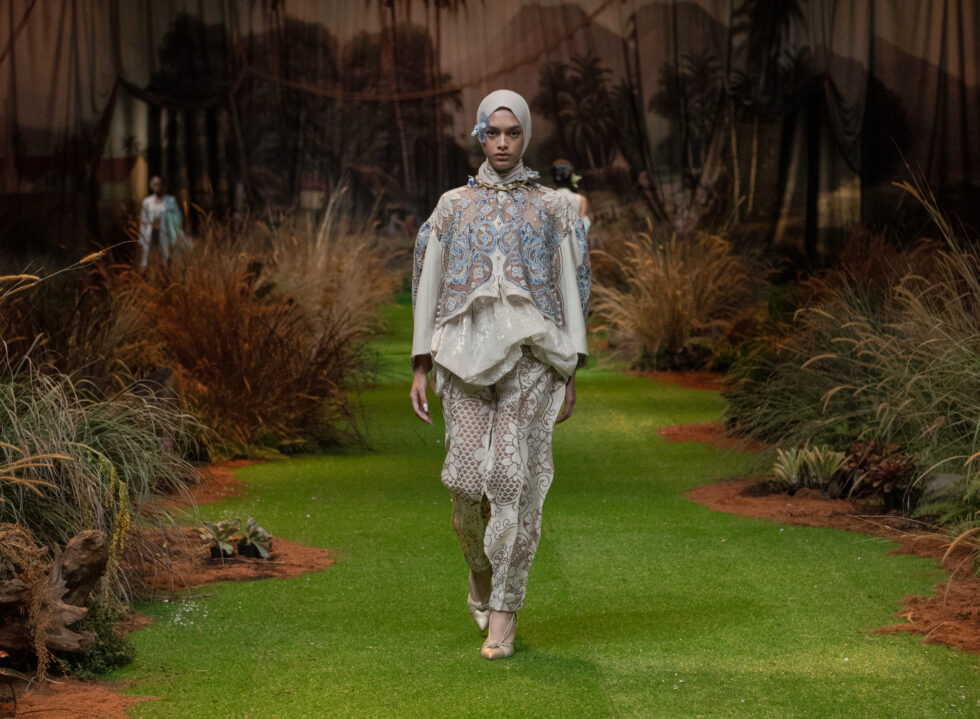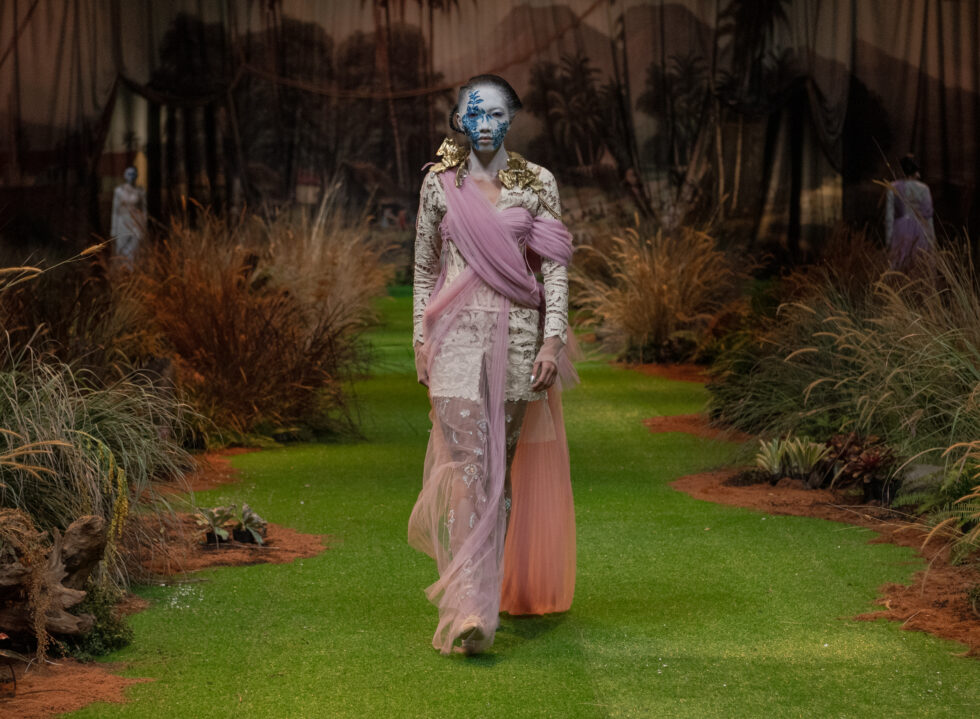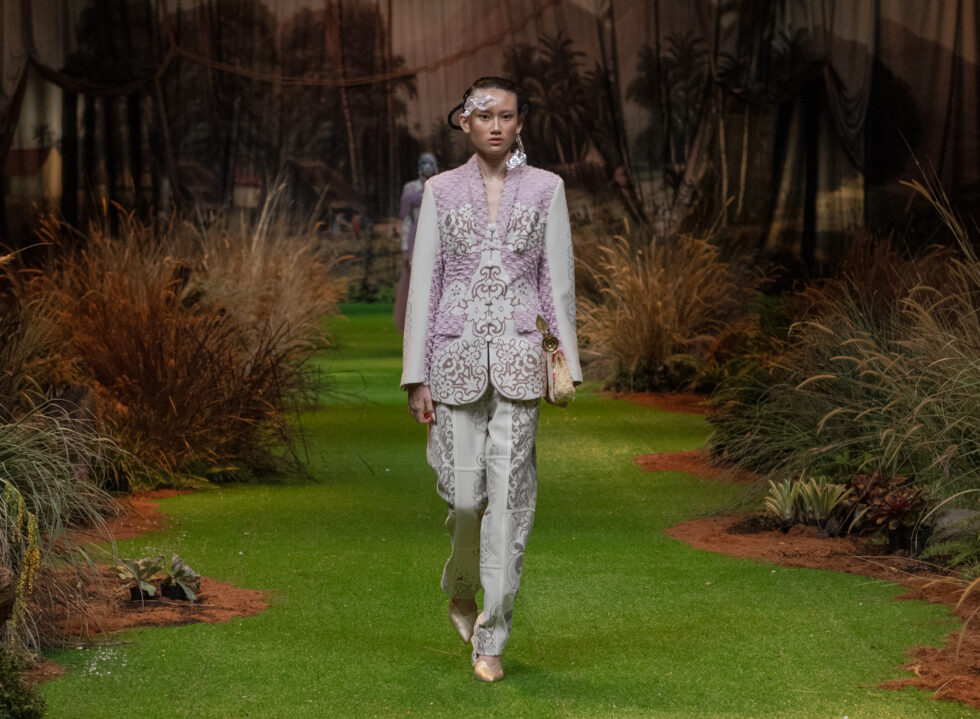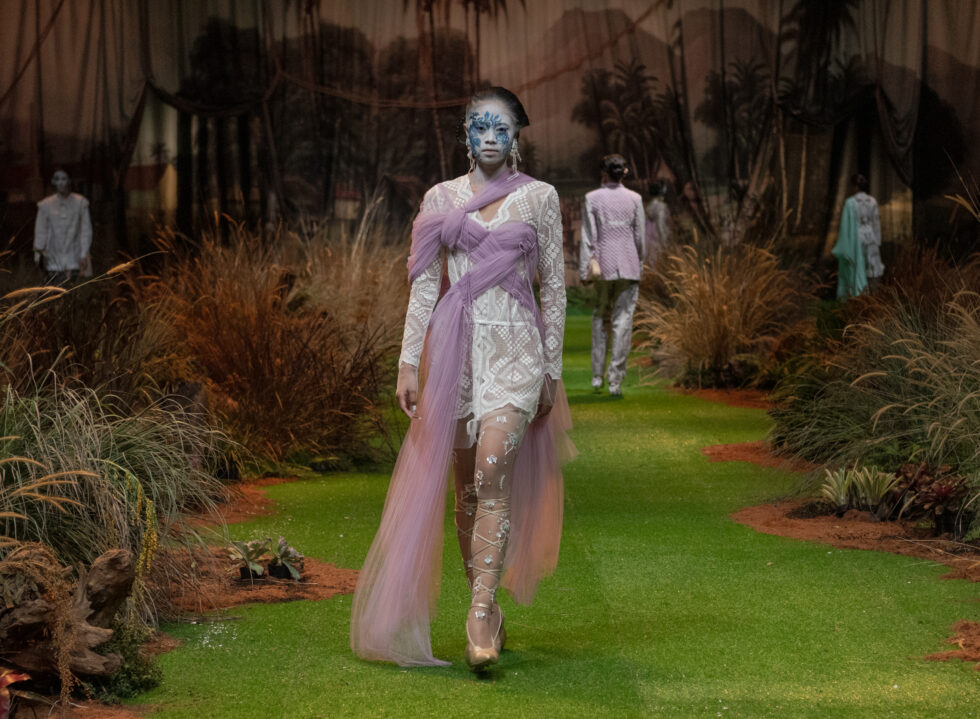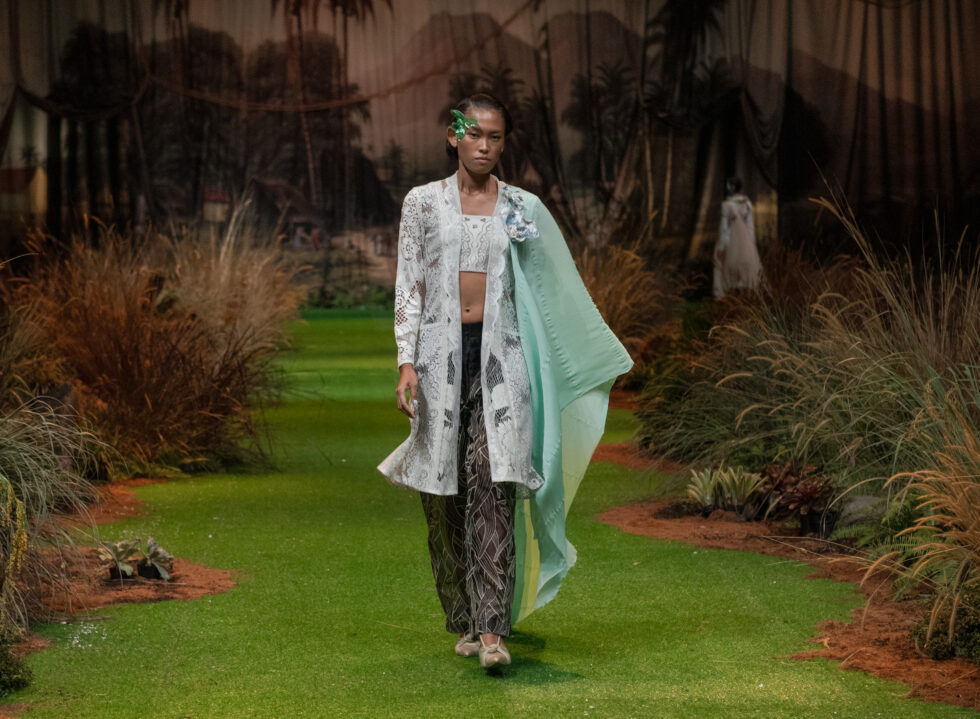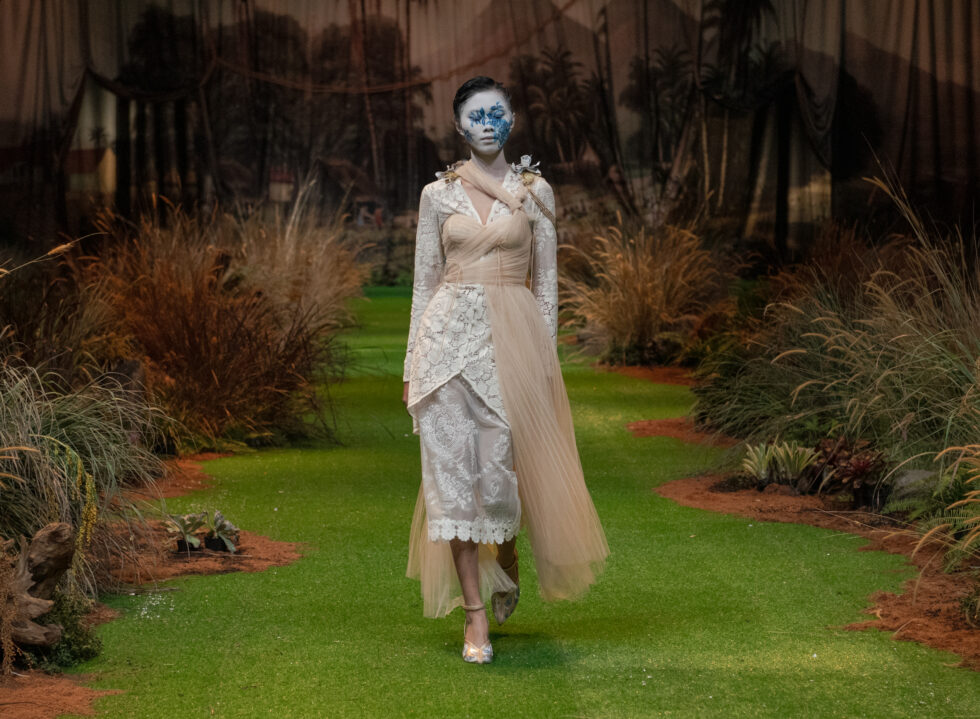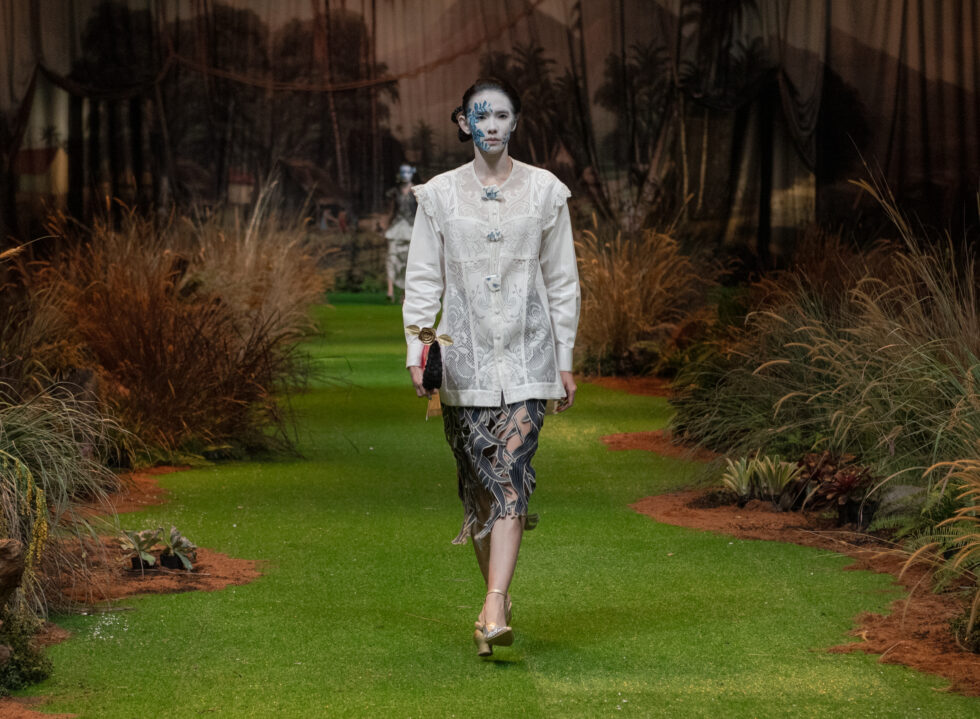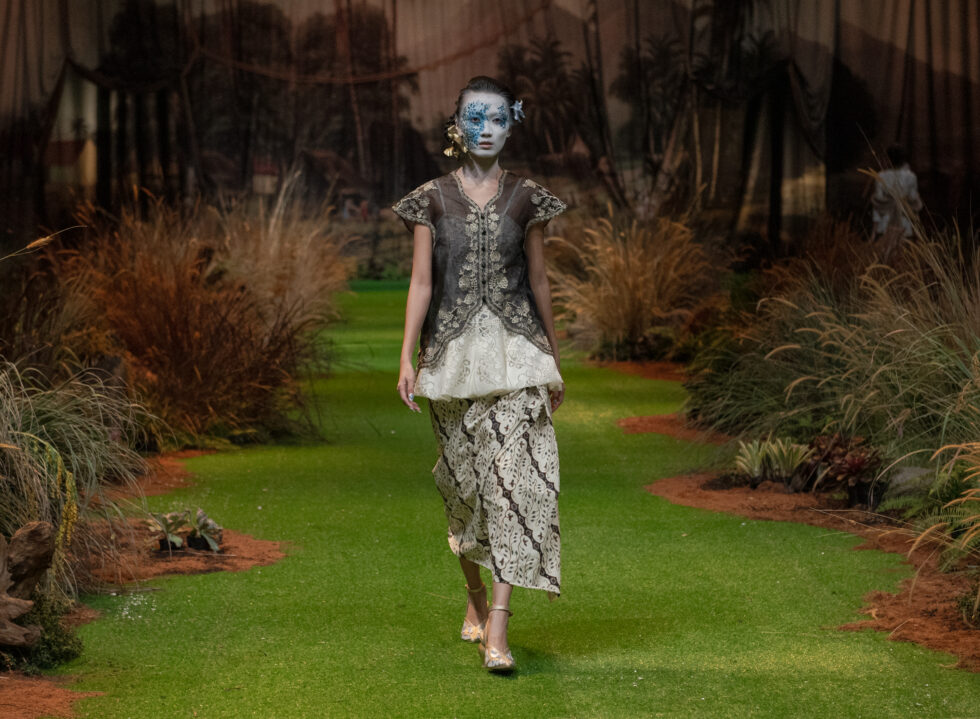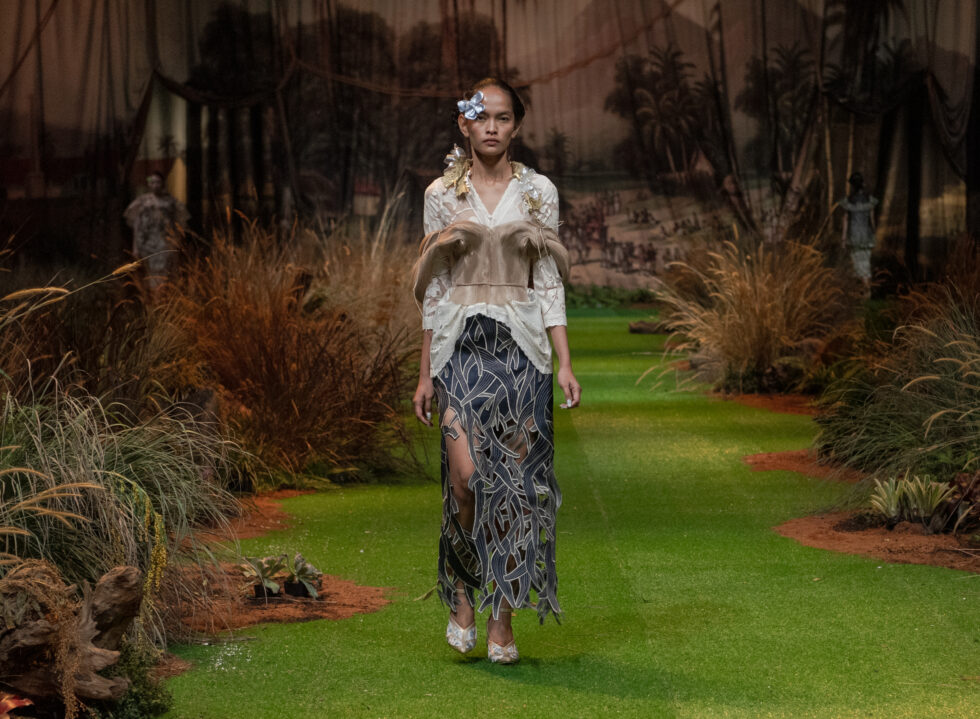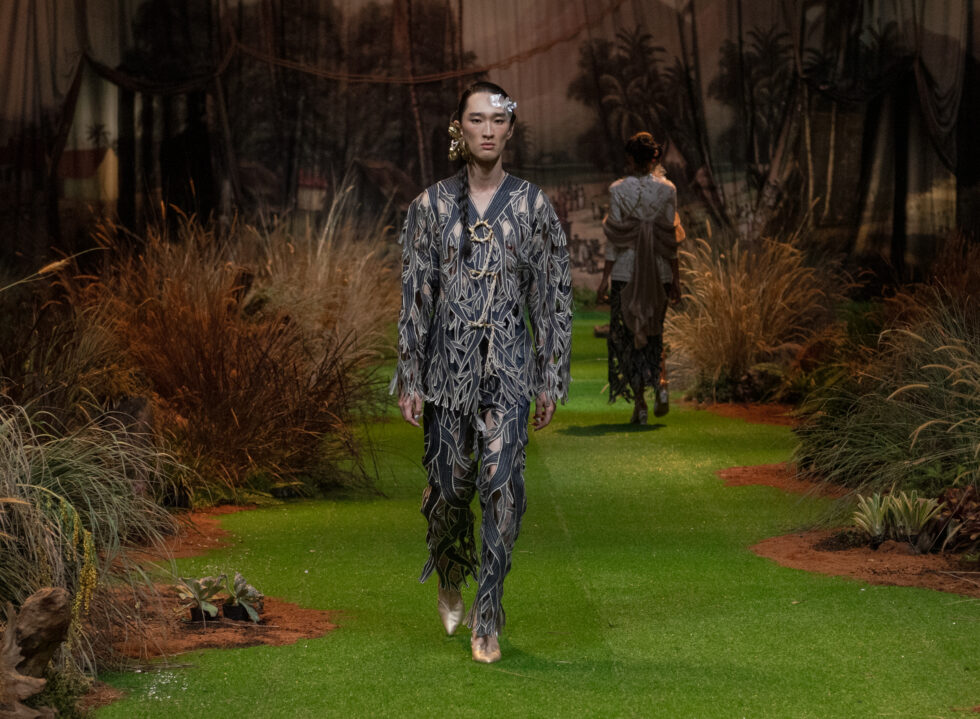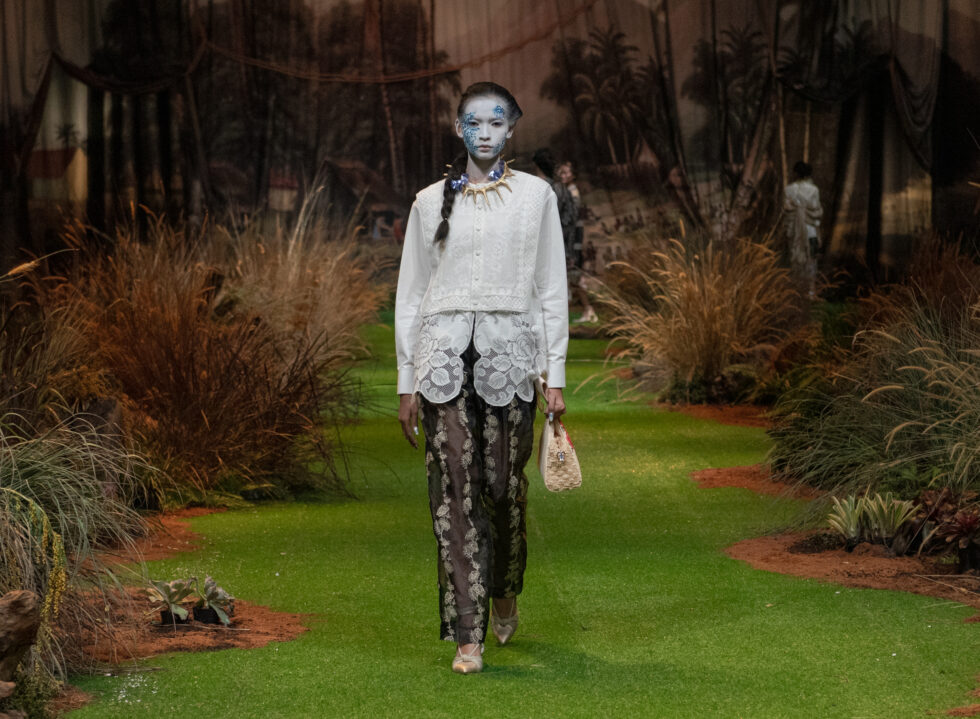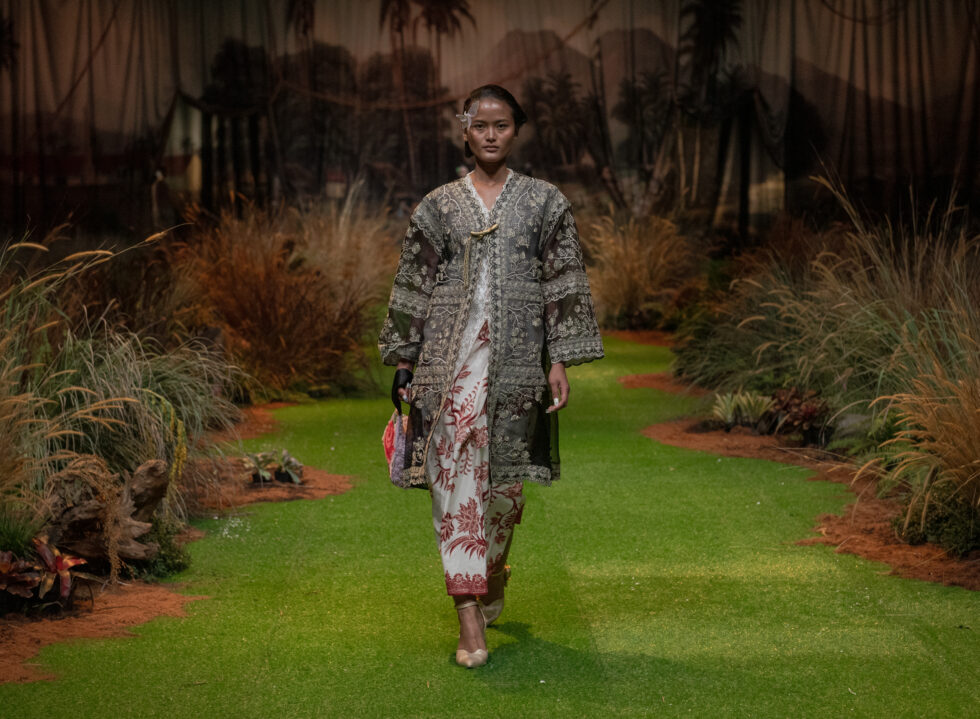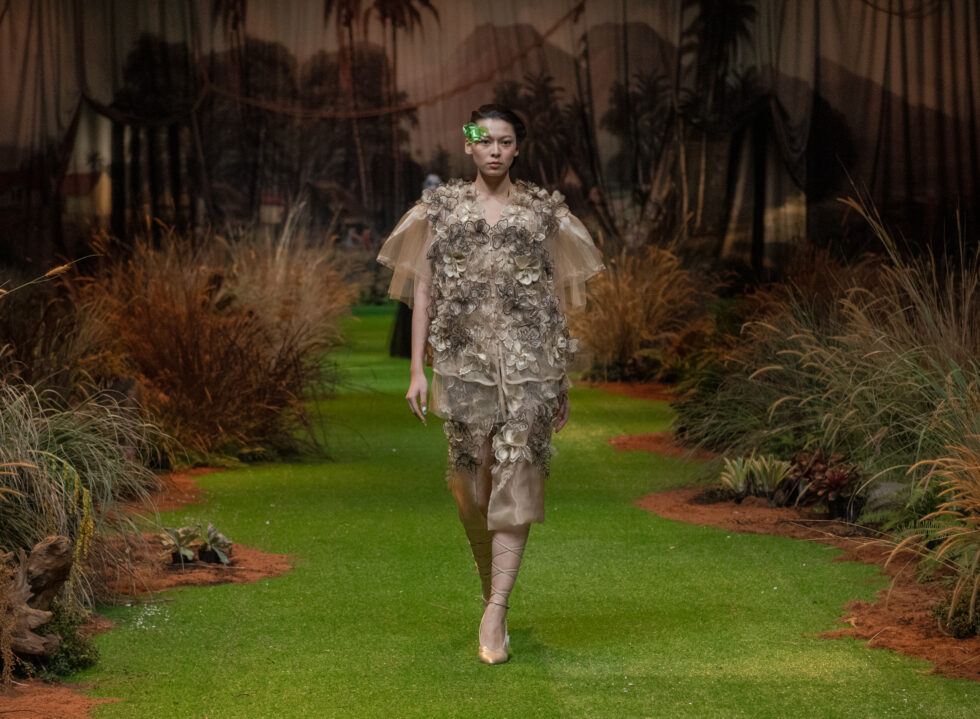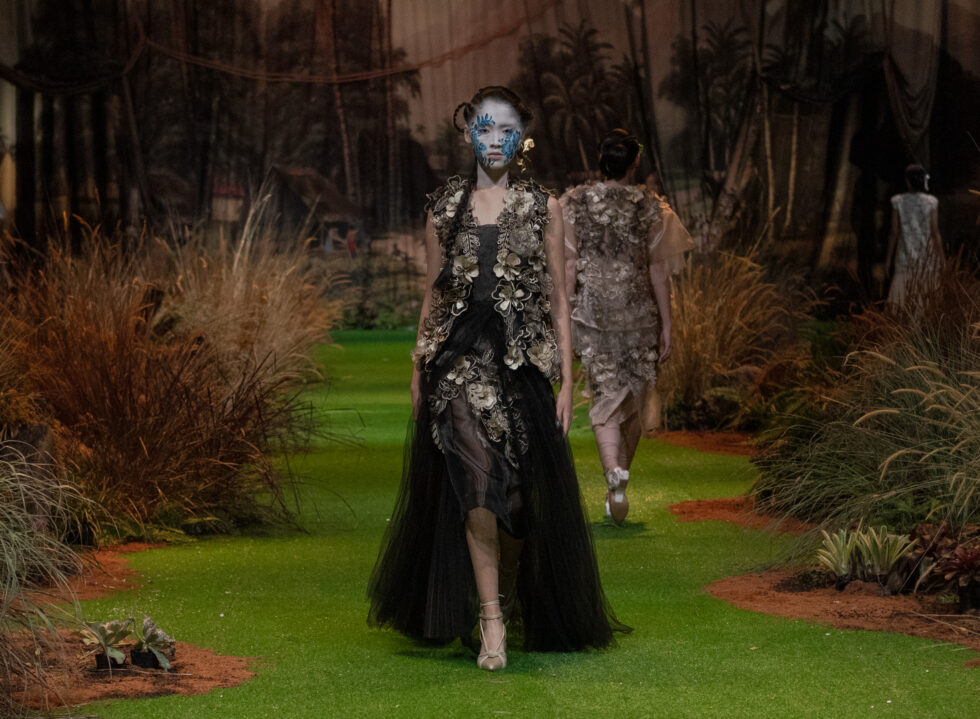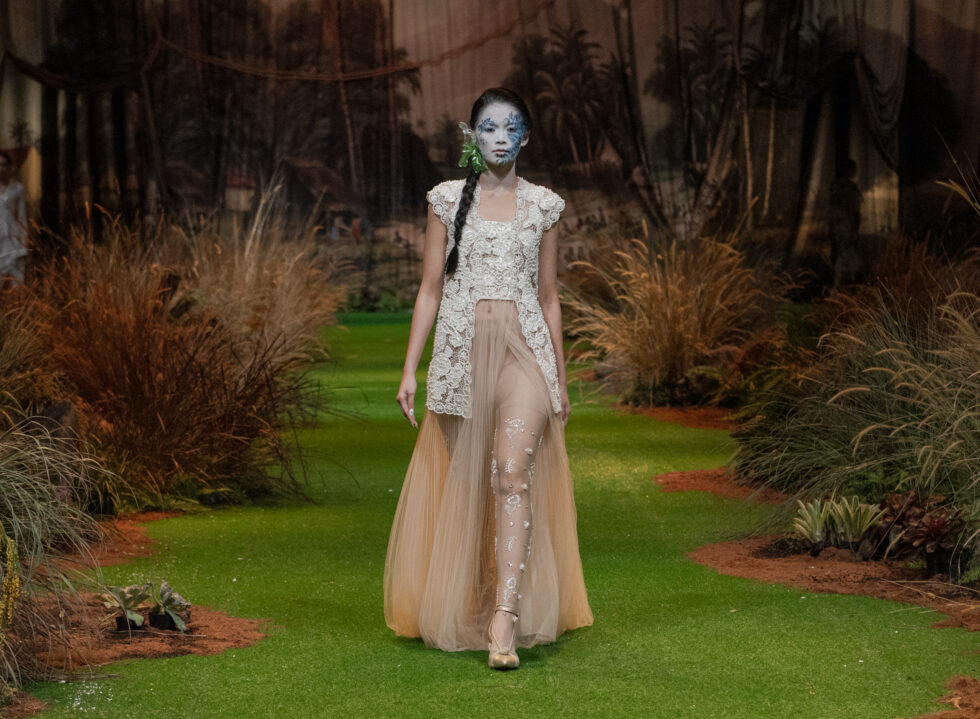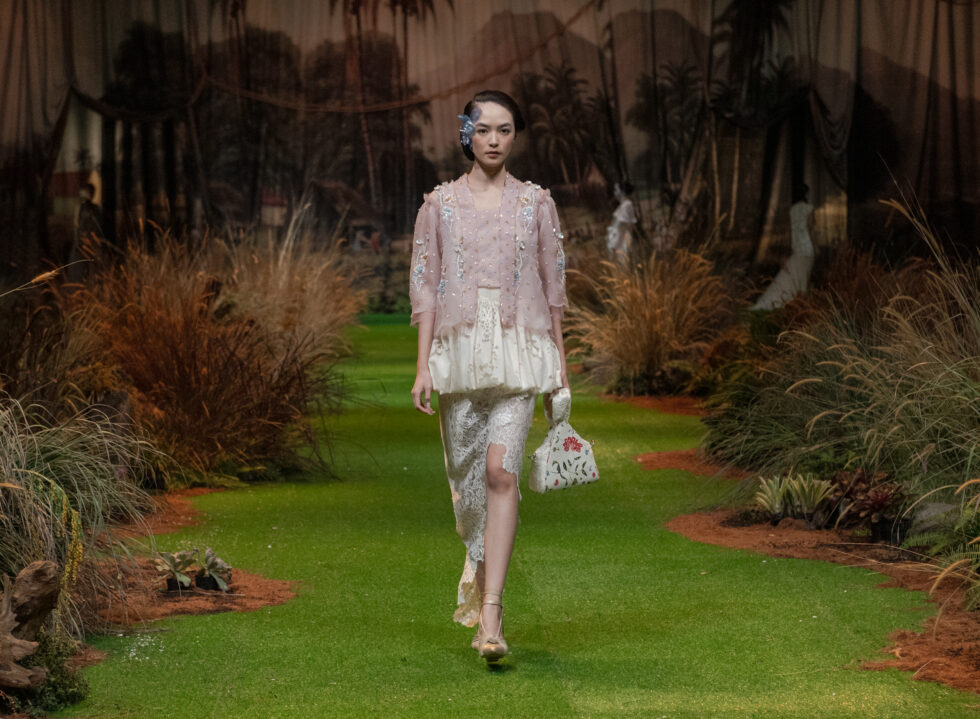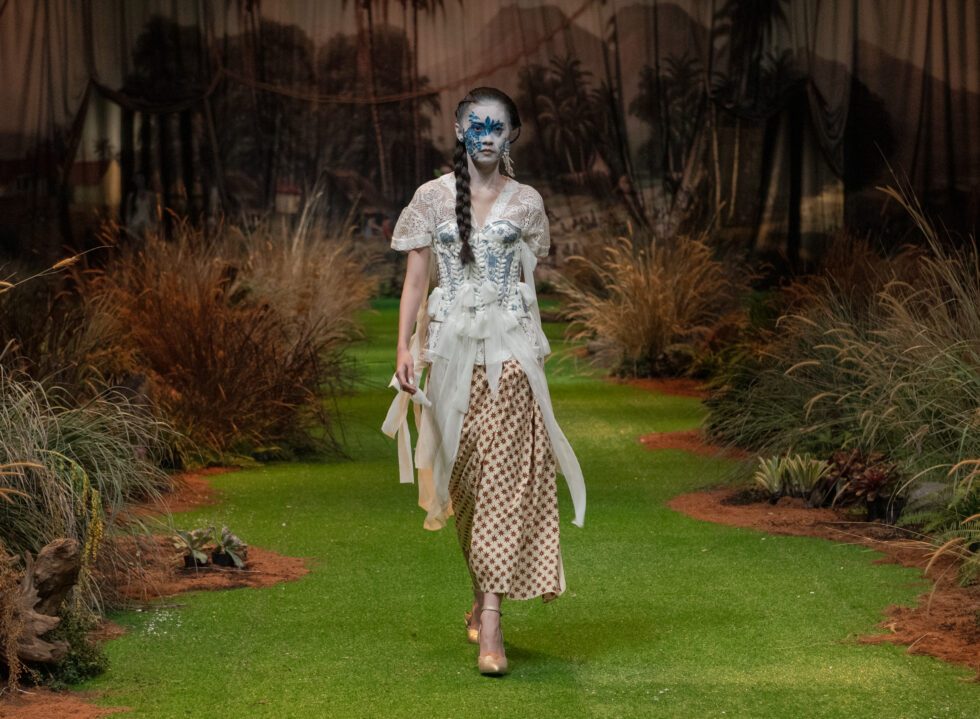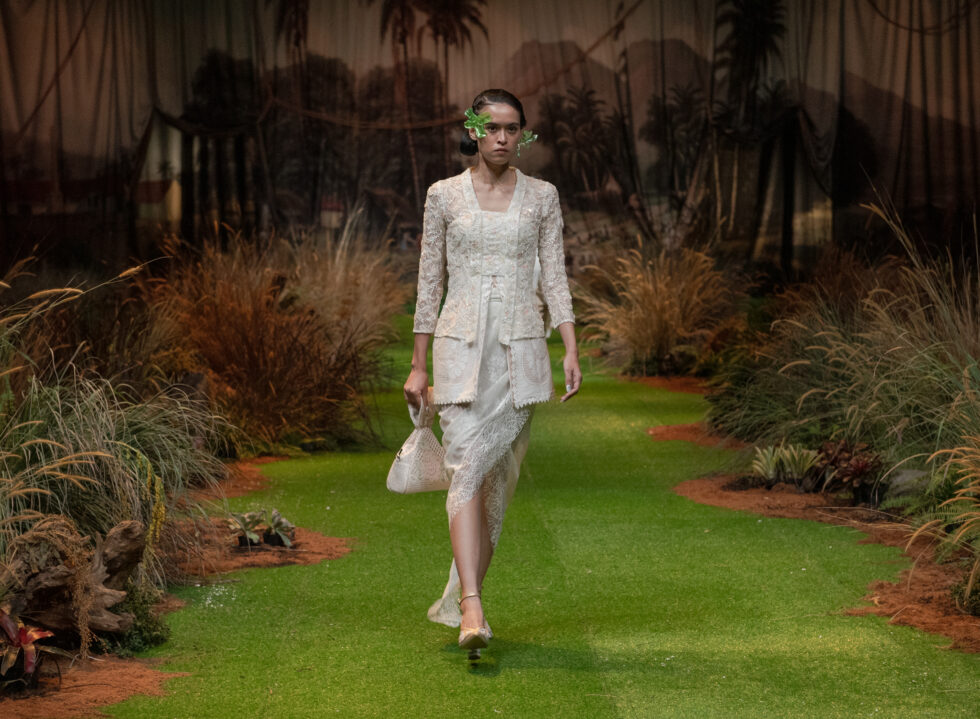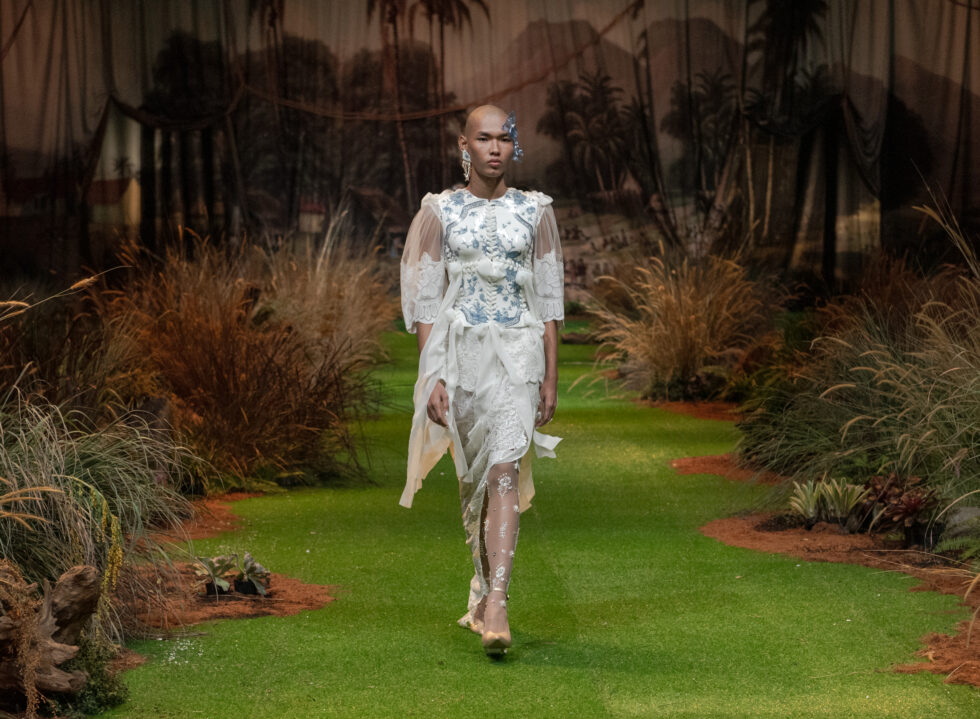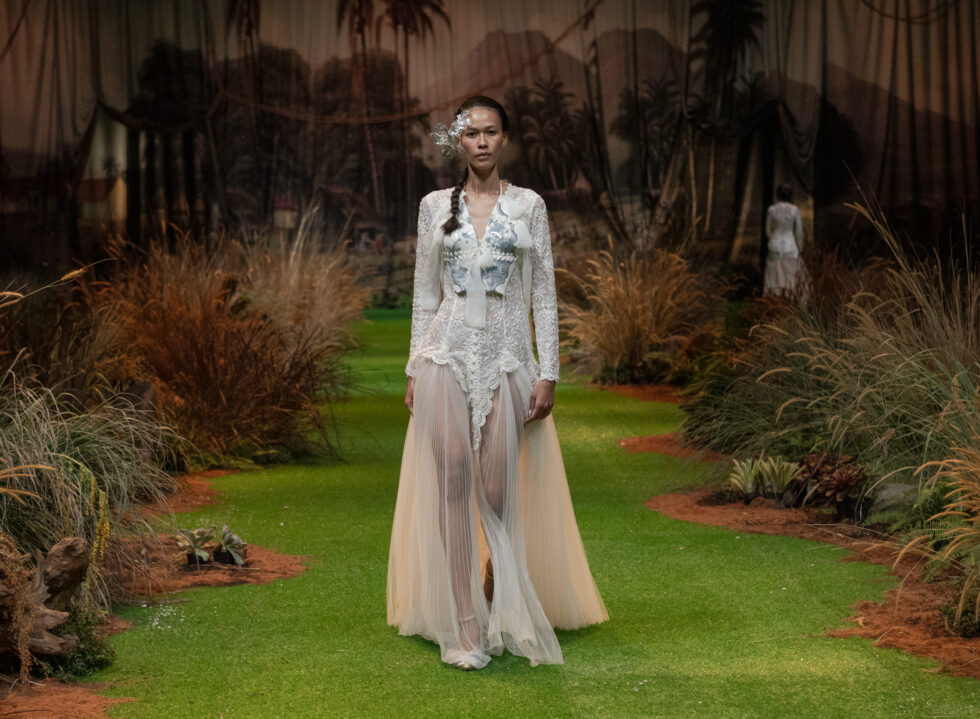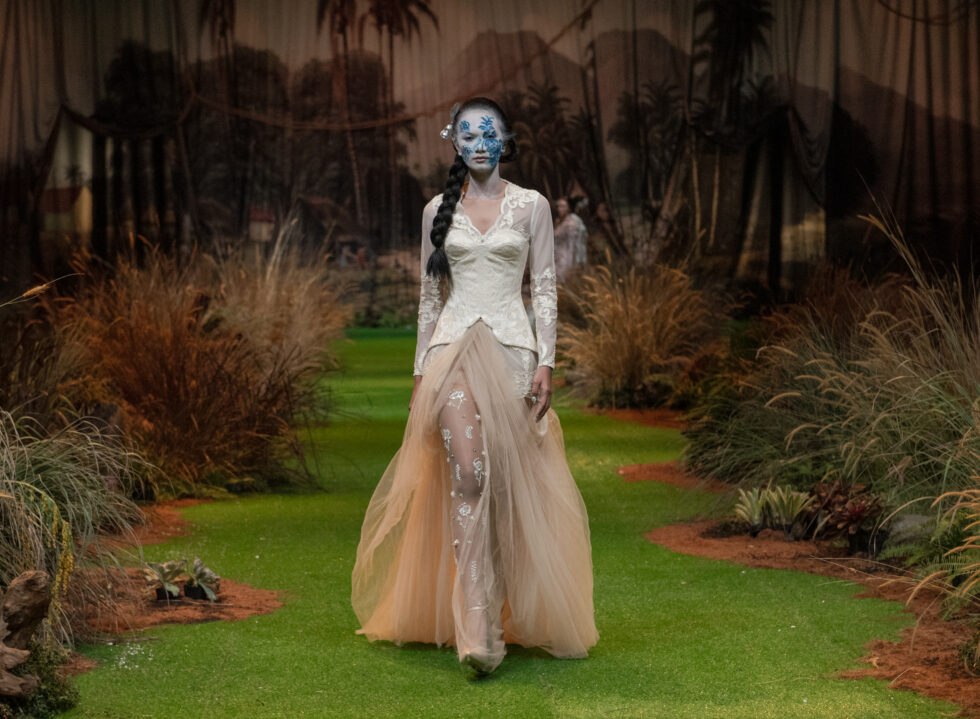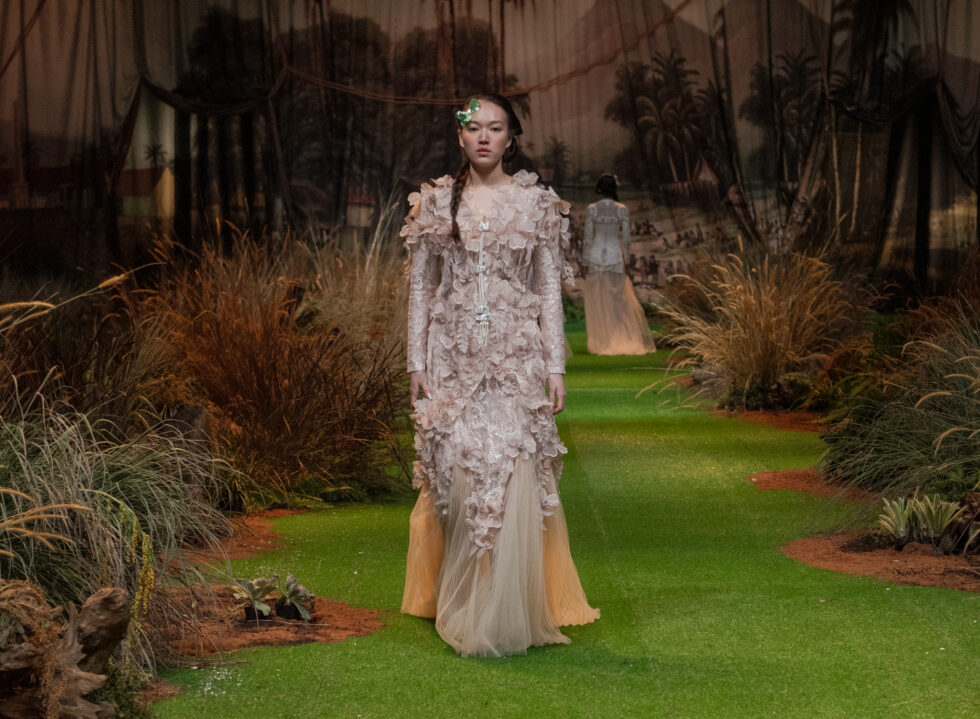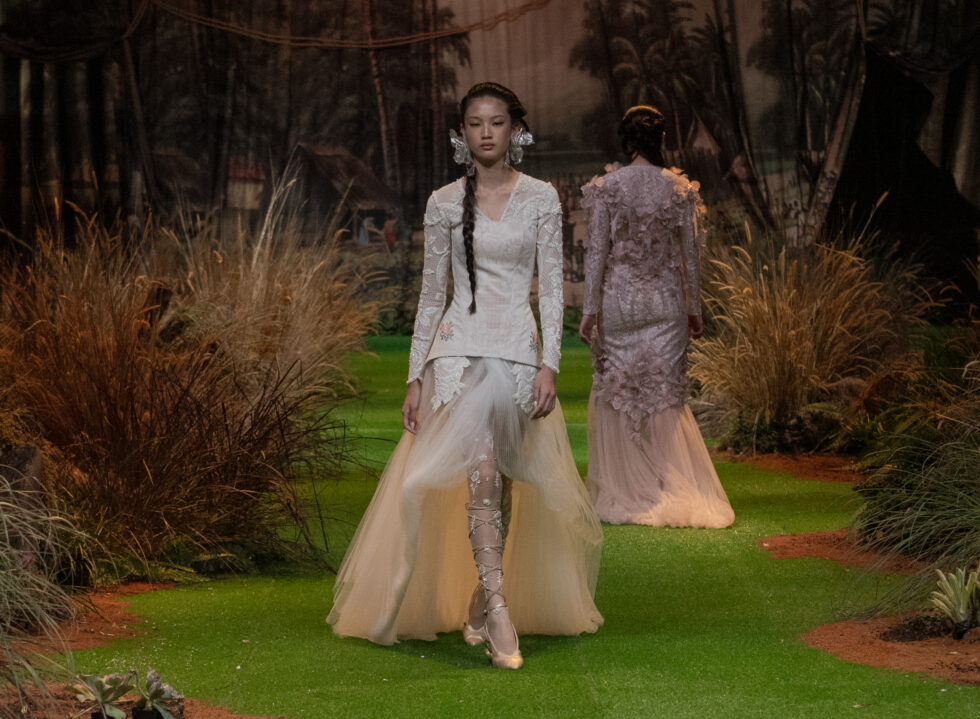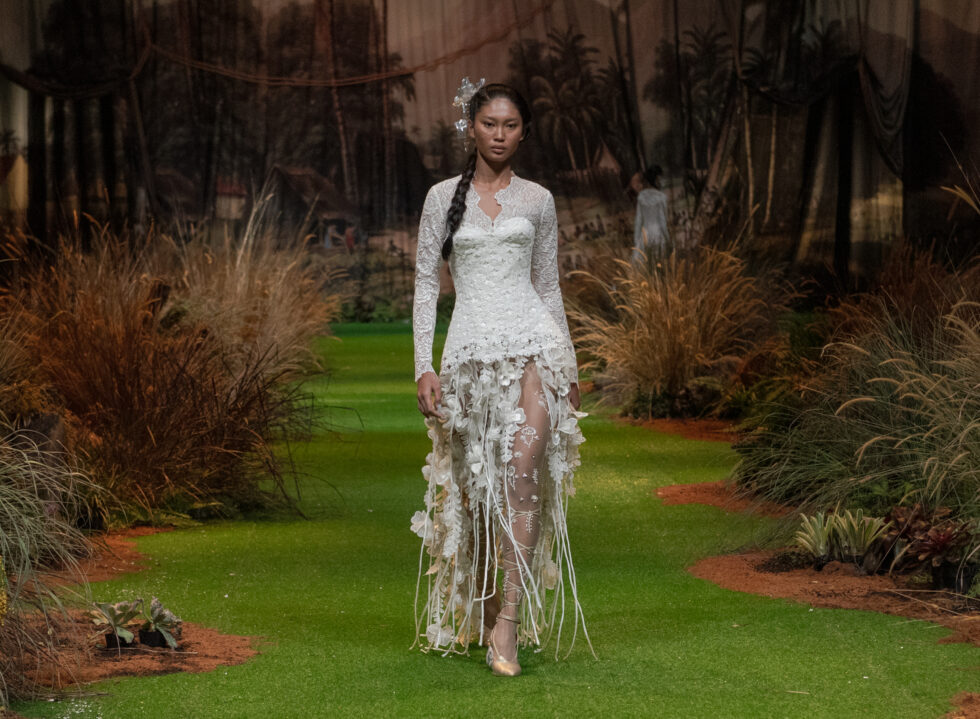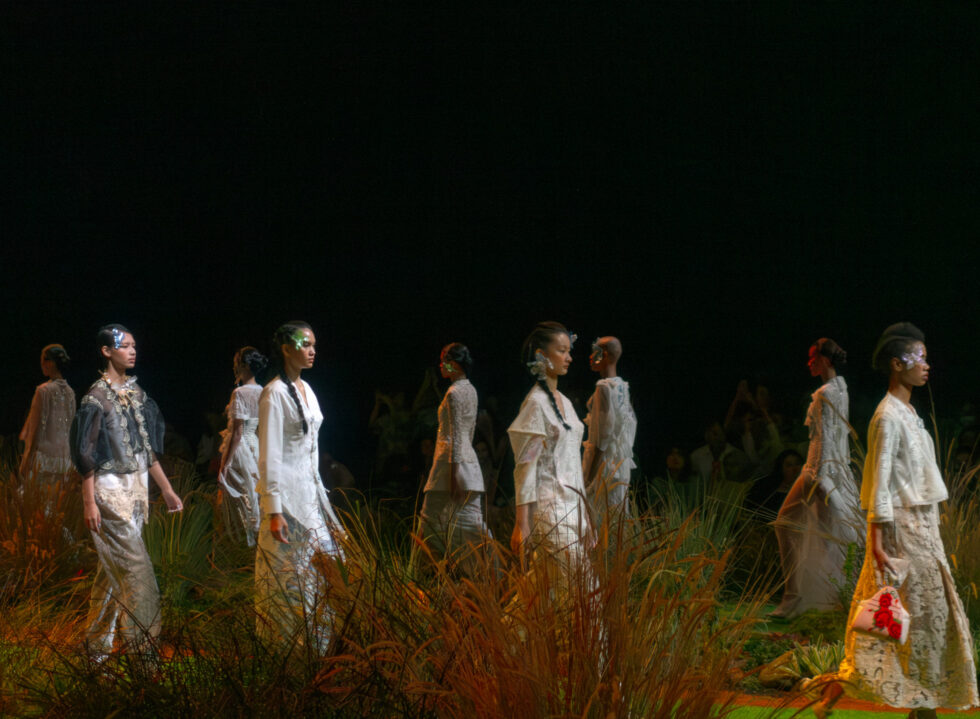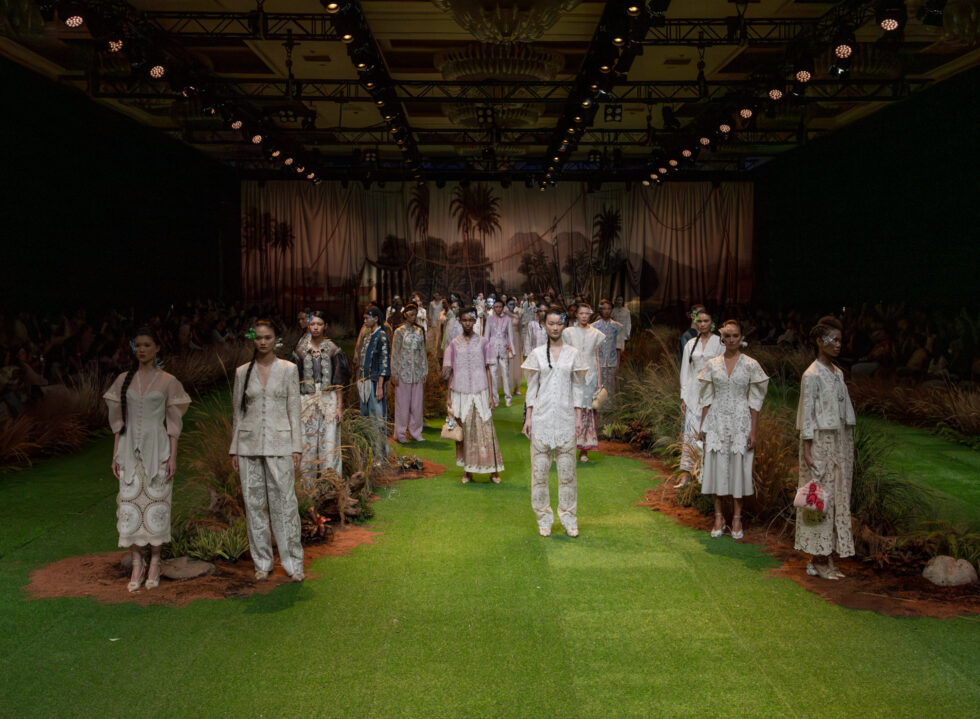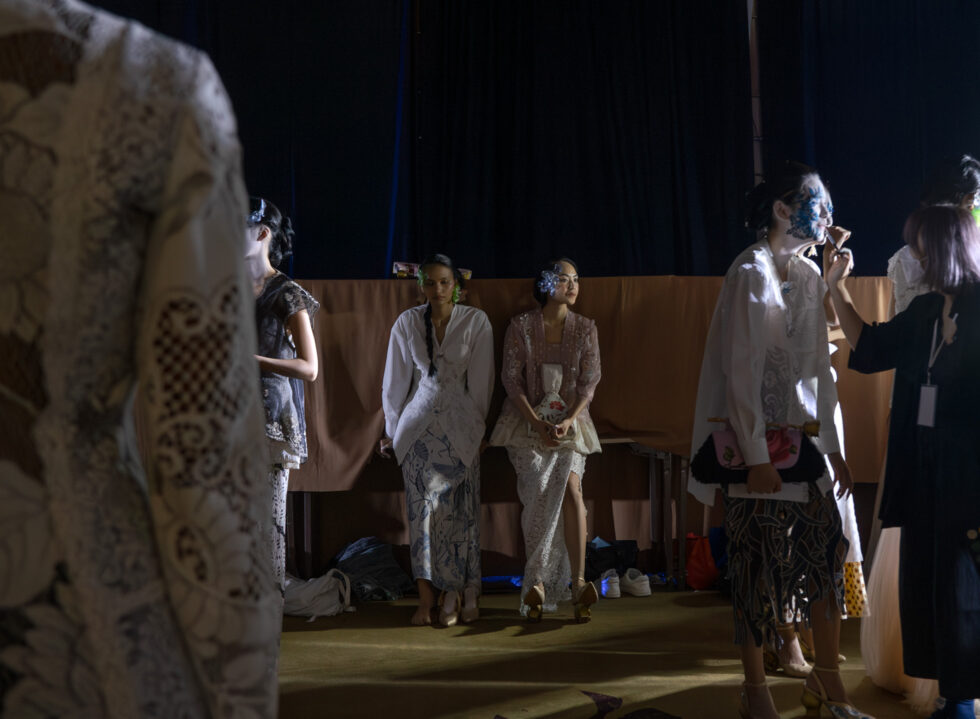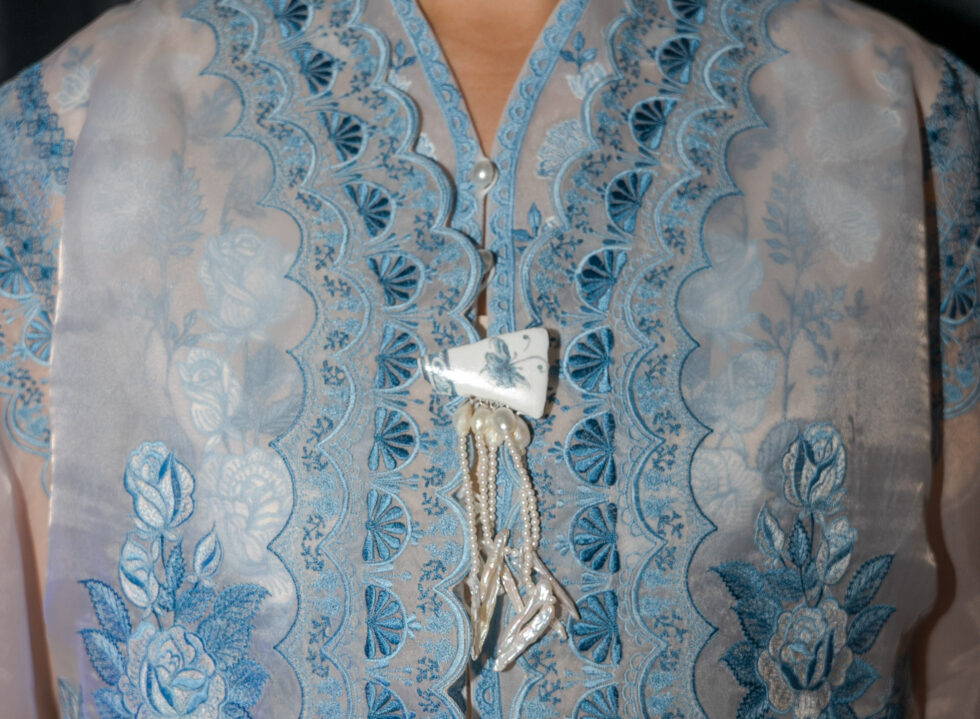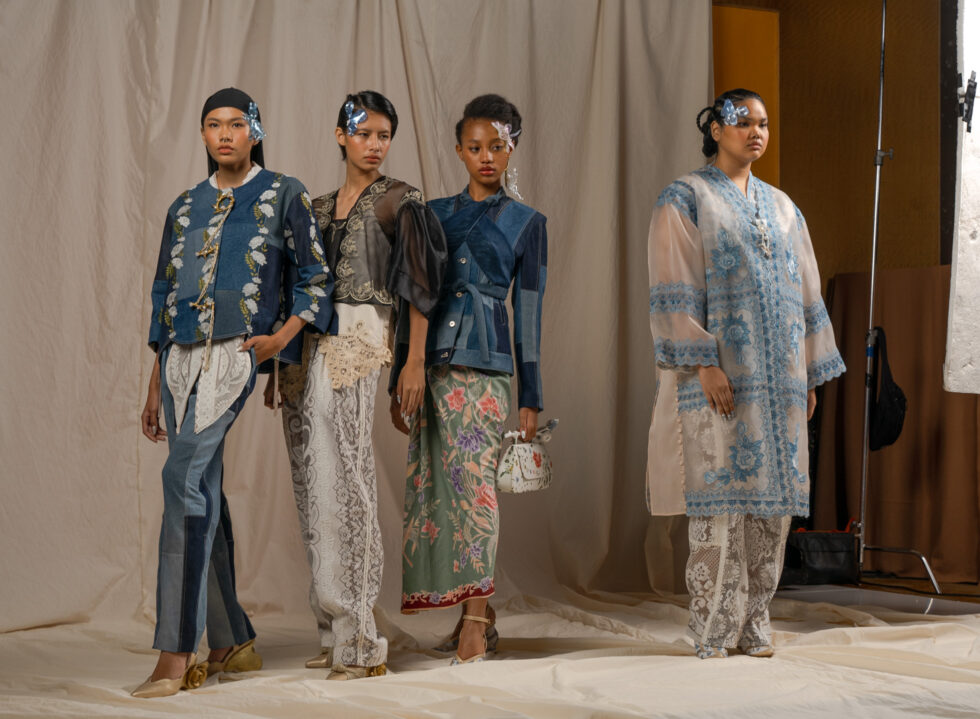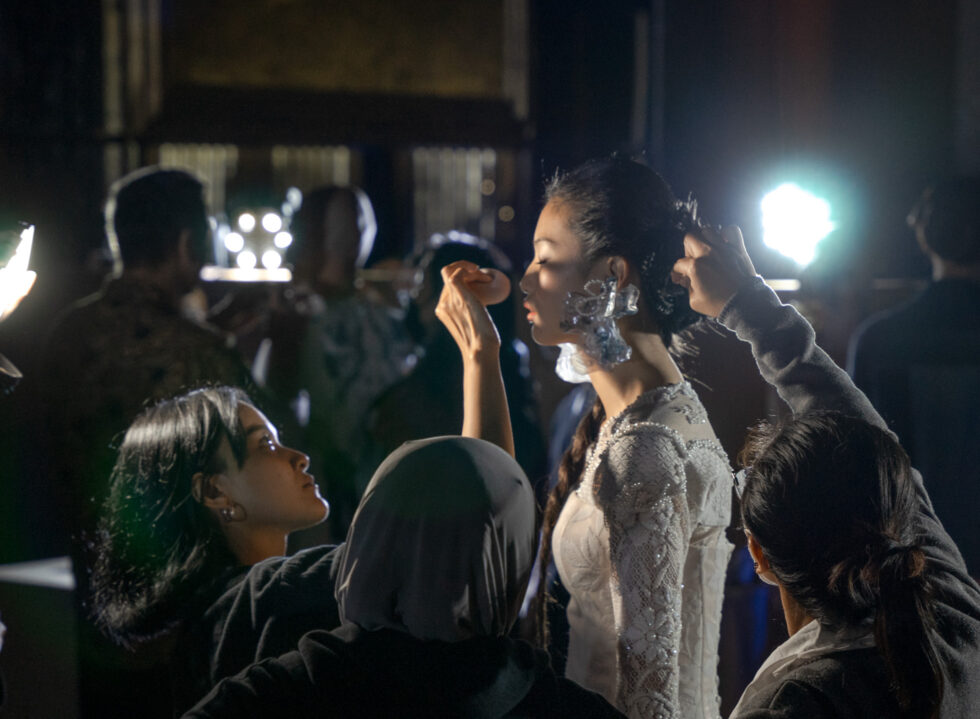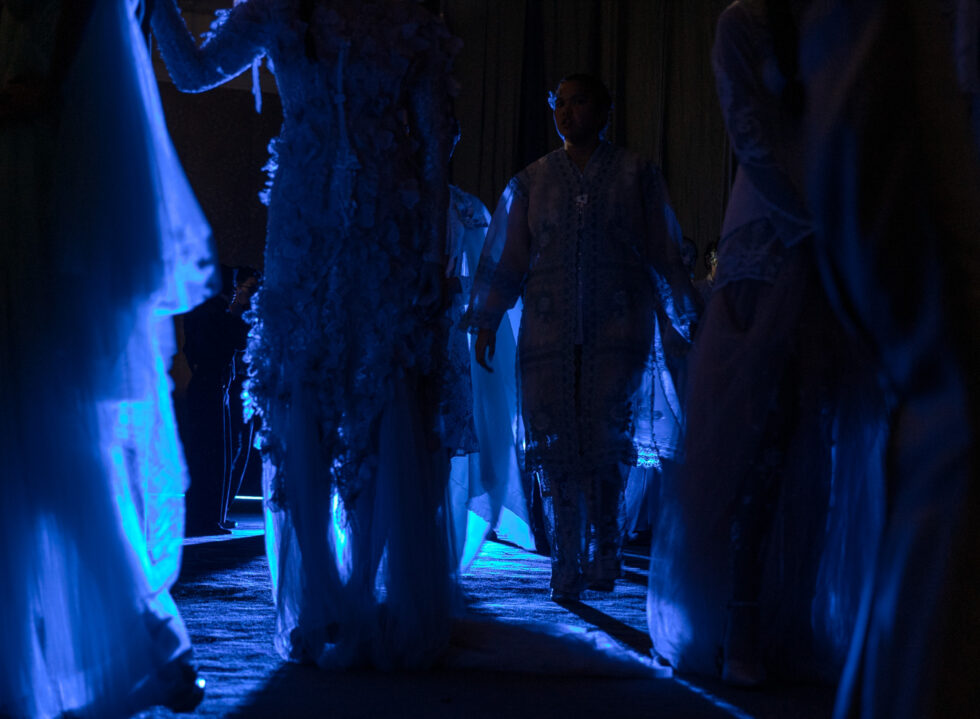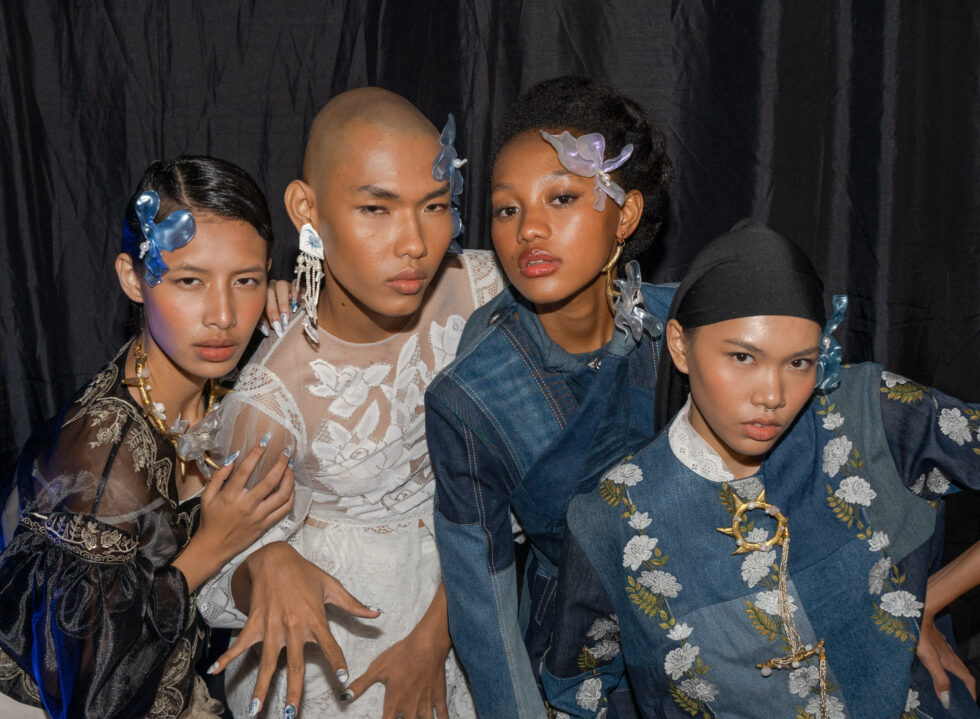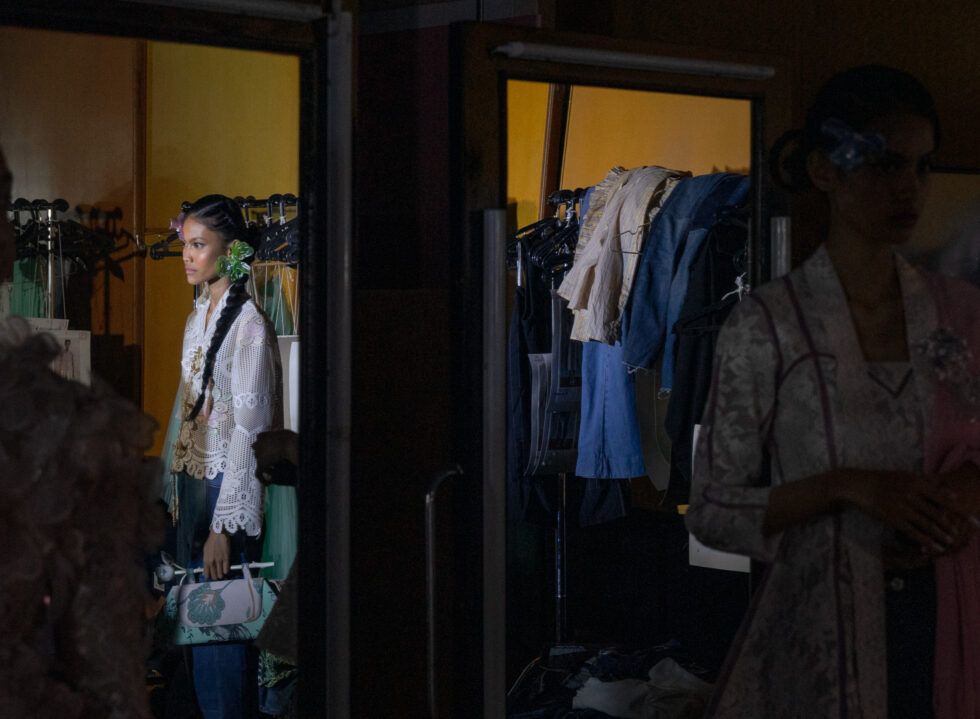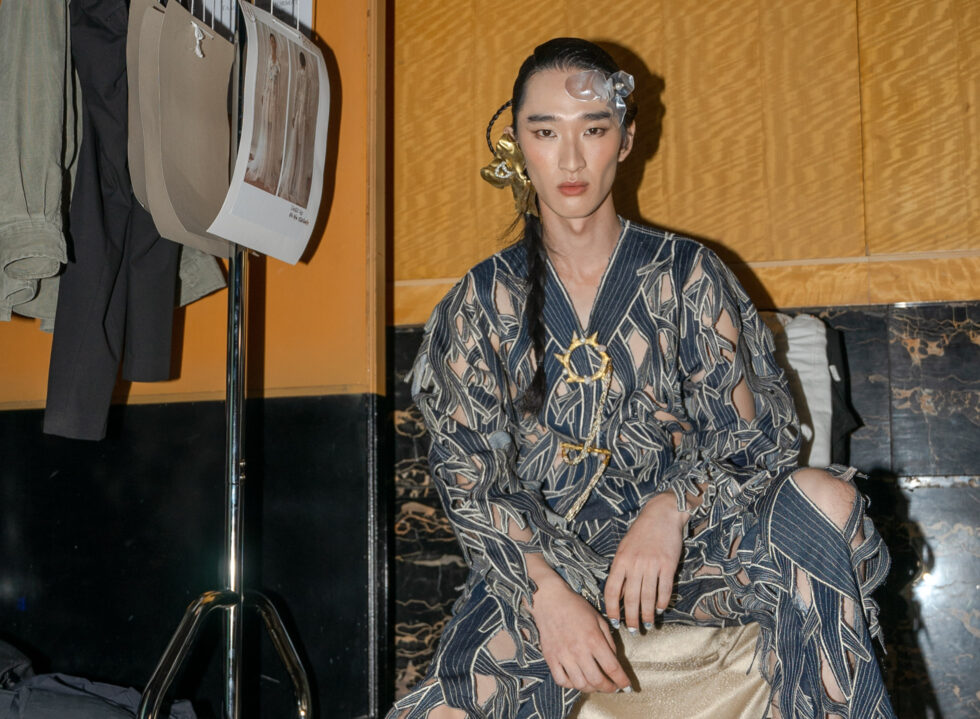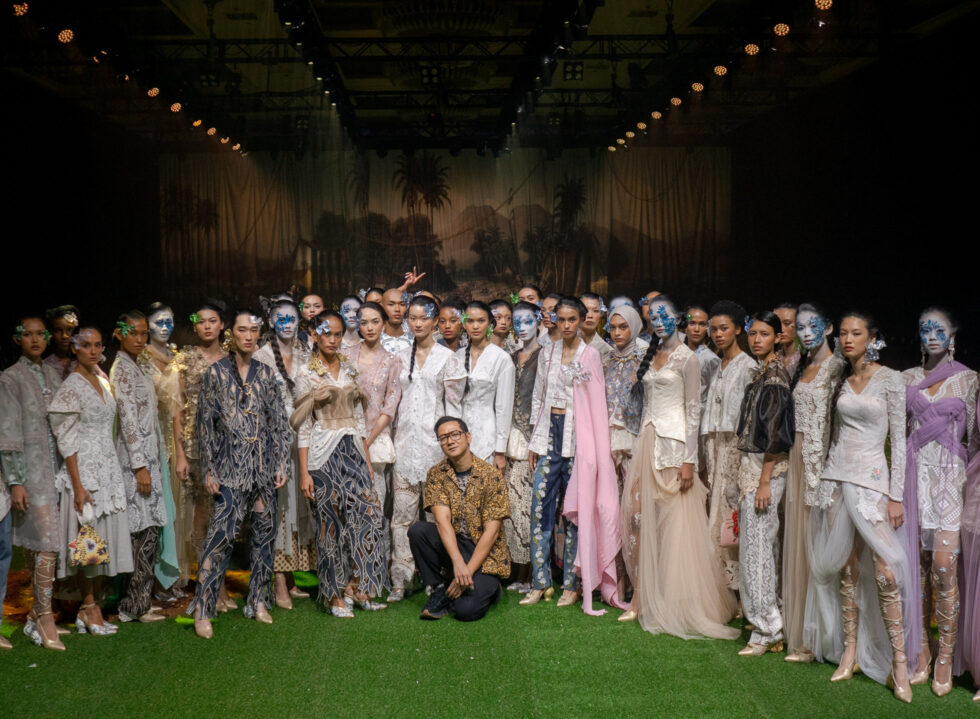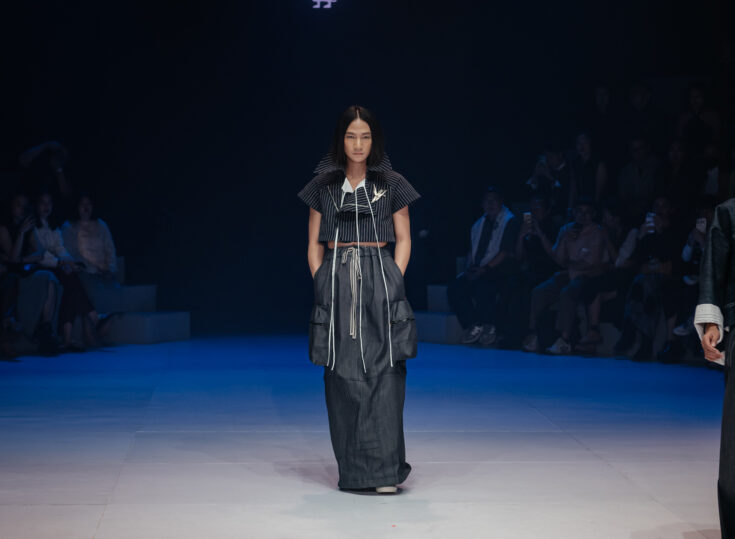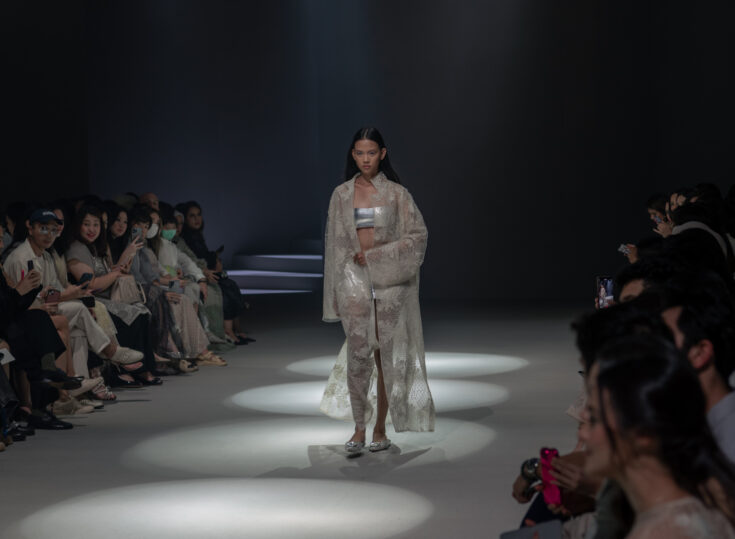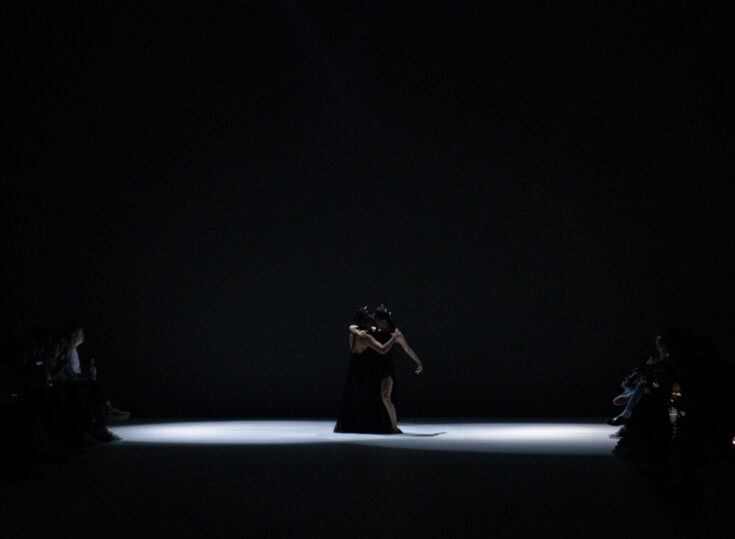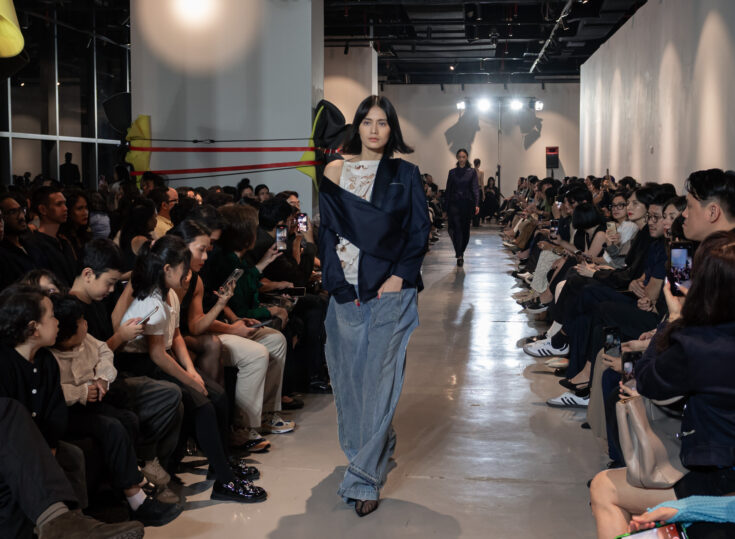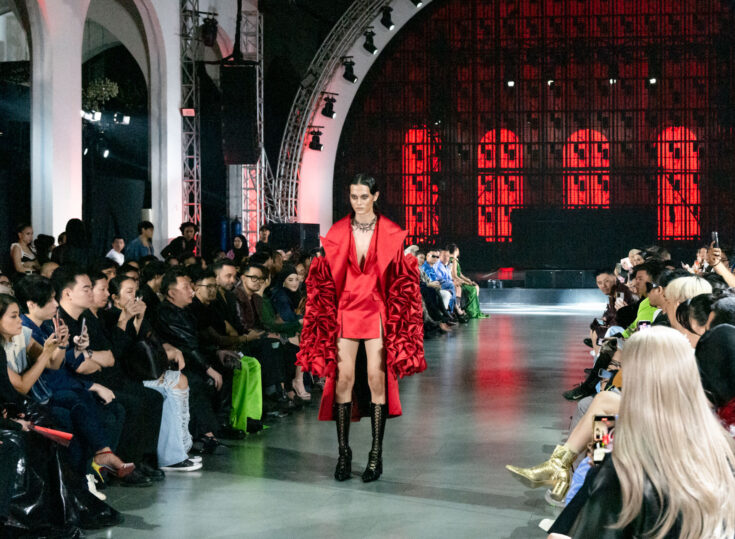Last Thursday, Toton Januar, the designer of the namesake label TOTON, showcased his biggest collection to date. Consisting of 45 looks, it’s his way of probing into Indonesian clothing: how to work around its purist rules and can it be contemporary, in both design and point of view. Staged at the Grand Ballroom of Hotel Mulia with a roster of VIPs in attendance that included celebrities, photographers, stylists, and influencers, Toton’s solution to that question is less of a definite answer, but more of a proposition on how to address the body as well as the conventional assumptions of traditional garment.
As models streamed out at a leisurely pace from the massive curtain backdrop that resembled Dutch artists Abraham Salm and Josias Cornelis Rappard’s depiction of idyllic life in Indonesia (then Dutch East Indies), it’s clear that the particular garment that Toton had in mind was the kebaya. The latter, which is believed to have its roots in the Middle East, is typically identified as a form-fitting long-sleeve blouse that is fastened at the front with brooches and paired with batik sarong.
Just as there are many versions of kebaya to be found across regions and countries, Toton’s personal take opened up multiple ways of interpreting the garment as the basis of contemporary dressing that responds to present-day needs. Right from the first look, a kebaya-inspired blouse made of tablecloth lace was paired with denim pants with contrasting panels, which set the tone of what was to come.
There are looks that carried a more identifiable reference to the kebaya. To wit, a long sleeve, knee-grazing blouse, which revealed a piece of faux cropped camisole underneath, appeared to merge kebaya kutubaru and kebaya panjang. It’s hard not to be drawn to the tension of the model’s exposed navel with see-through embroidered long pants and a shawl elegantly pinned on the side of the body.
Toton also had the bold instinct to push things further, where the influence of kebaya on some of the looks required a double take. A fitted corset blouse paired with a flowing tulle skirt, when in motion, peeled back sensuously to reveal embroidered leggings—a glamorous offering for big occasions at first glance. But what might be easily missed is the form-fitting silhouette of kebaya reinterpreted through the corset bodice, which swapped the traditional batik sarong for a more dazzling option fitting even for the red carpet.
What really grounded the entire show is the cast of models. There’s a sense that you’re witnessing a tribe of women that exists in the designer’s utopia; there’s the graceful warrioress with a painted face and tulle coiling around her torso like soft armour. In another, the sublime Reti Ragil, in a kebaya-inspired blouse with a sheer pleated skirt, looked like a disregarded princess who is fourth in line for the throne, but fate would have her ascend to the throne anyway. There are also a couple of male models in the mix, but that’s not to suggest menswear. Instead, they alluded to the diverse community of Toton’s clients, who may not identify themselves within the conventional and limited view of gender.
Those who are purists when it comes to traditional Indonesian clothing are most likely to clutch their pearls with indignation at what Toton had presented. After all, there are many norms to be observed and taboos when it comes to conventional garments. What Toton showed is not rebelling against the conventions just for the sake of it. Instead, the designer is showing the exciting possibilities of traditional garments like the kebaya and batik when it’s not viewed through a narrow lens.
When Toton came out to take his bow, he was wearing a crew neck t-shirt in batik print. Traditionally, men’s batik shirt is worn untucked with a boxy and loose silhouette to display the batik motif in its full glory. One can read into it as the stirring precursor of his take on Indonesian clothing going forward. Regardless, it was the most radical move of the night.
